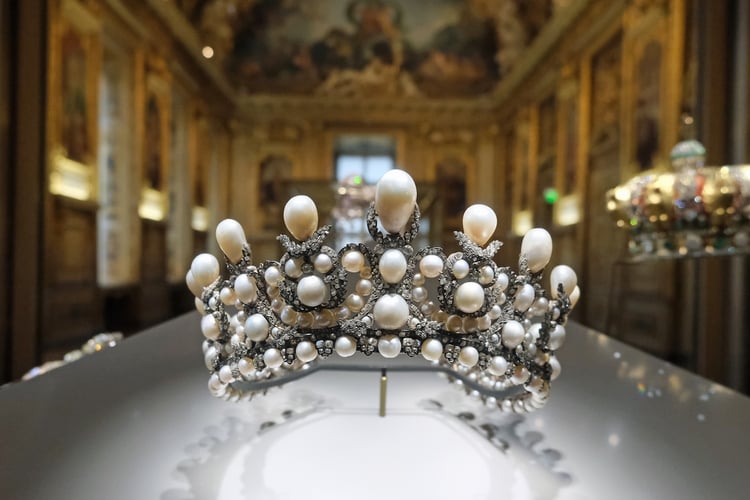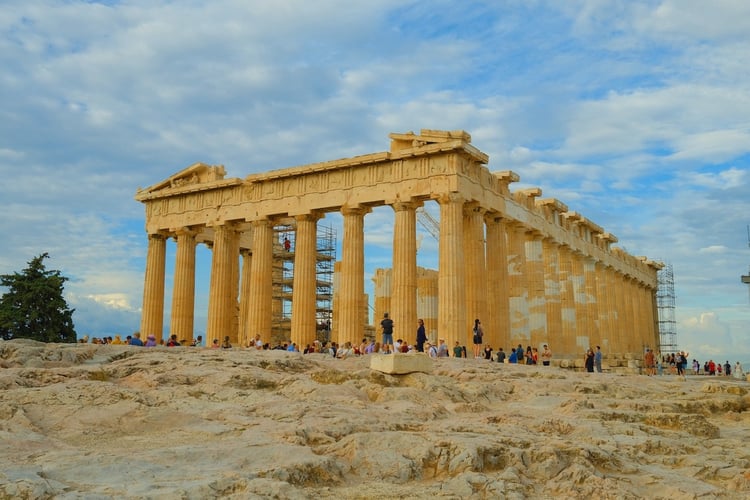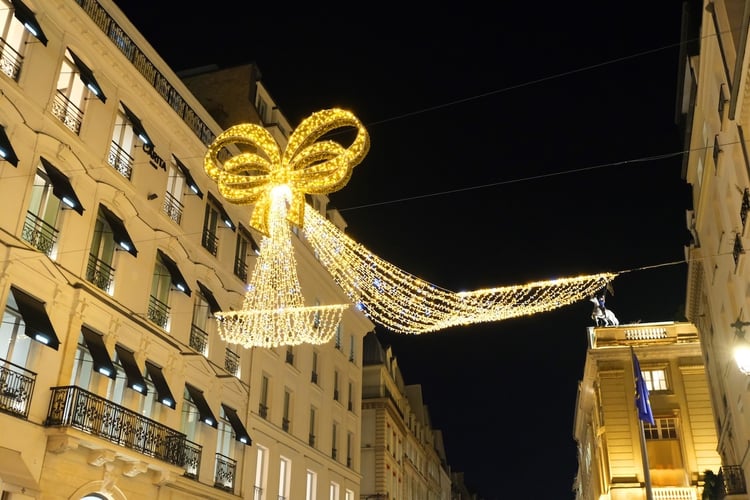
Athens Travel Guide
So you're planning a trip to Athens? Dive into our comprehensive Athens travel guide covering everything you need to know about Greece's capital city and the must-do experiences awaiting you.
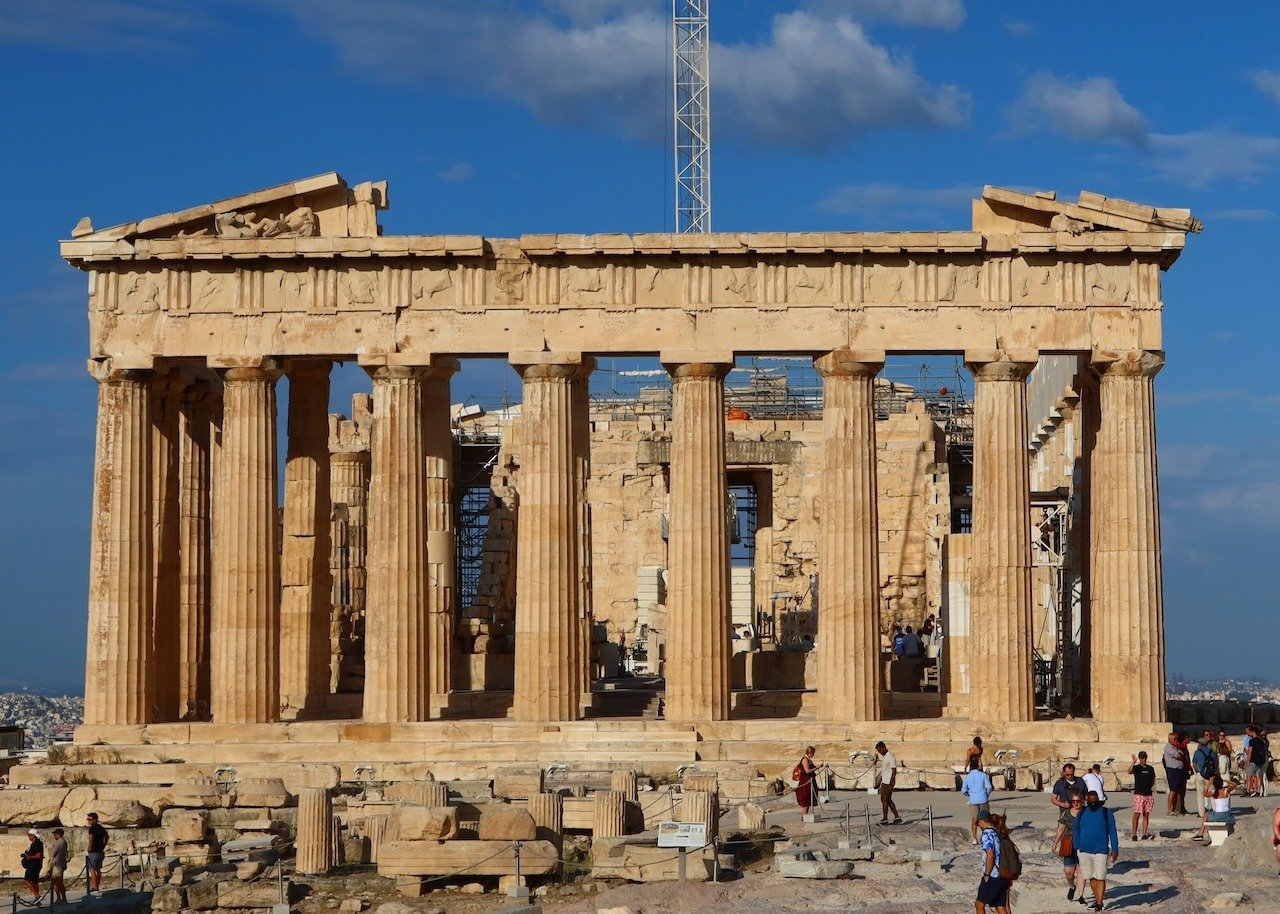
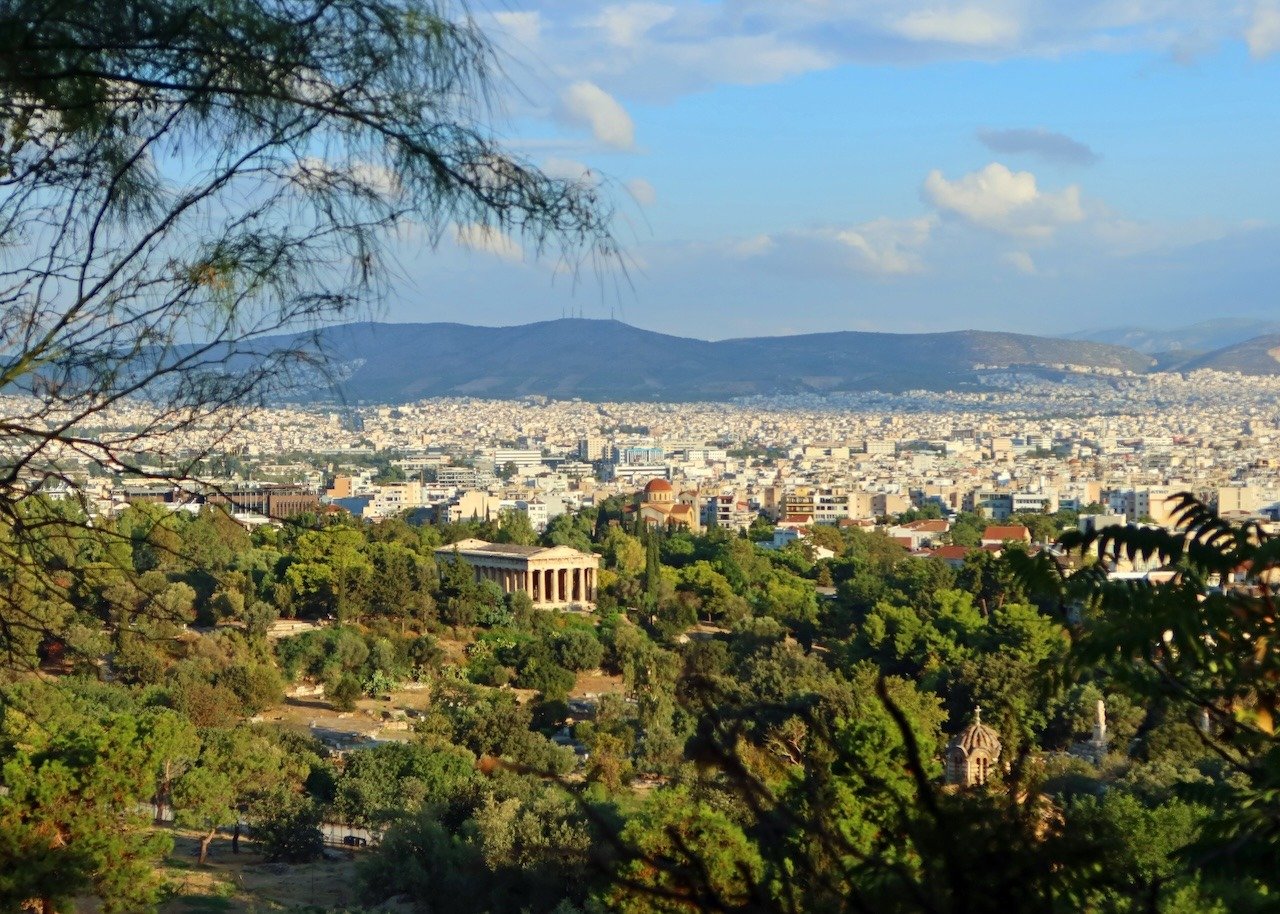
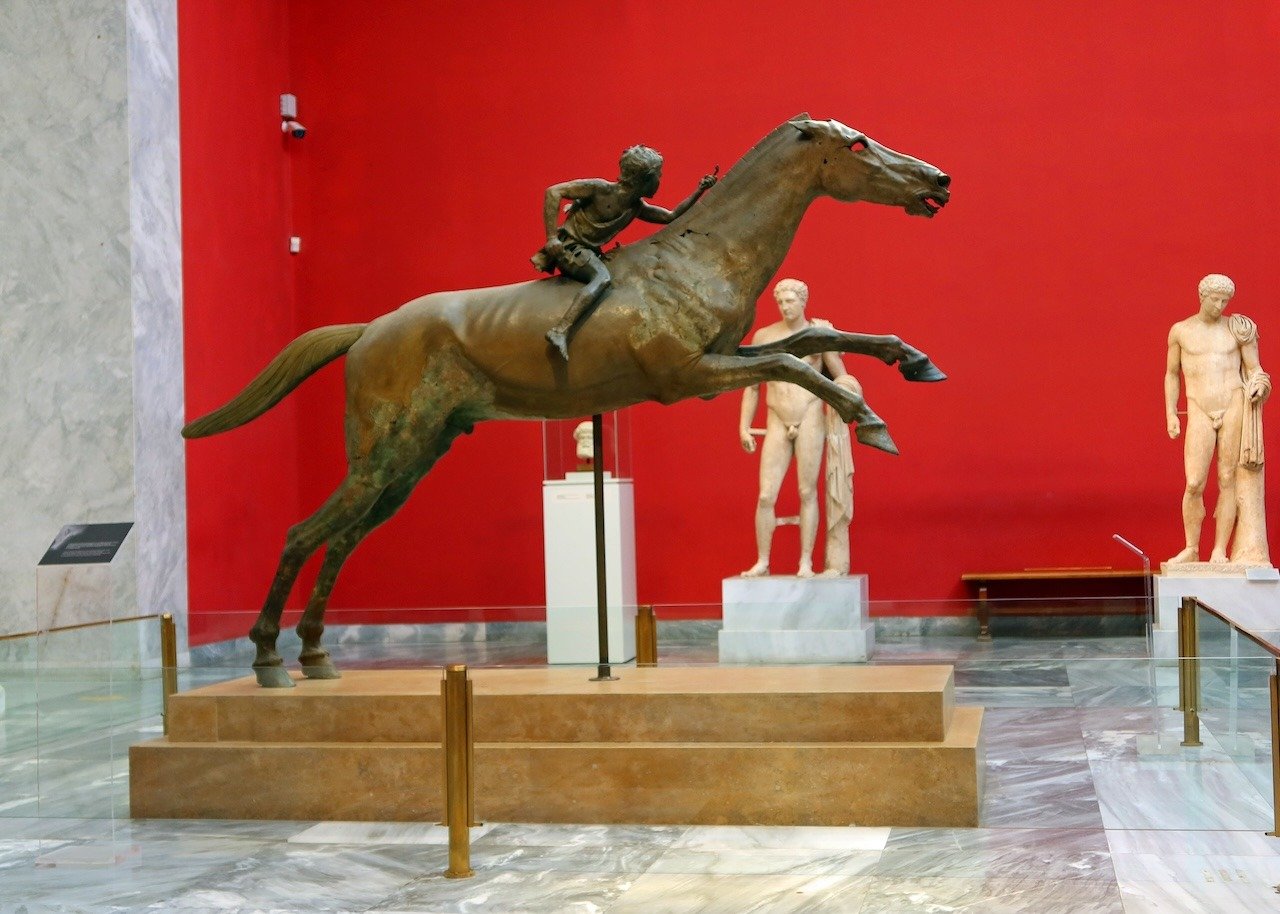
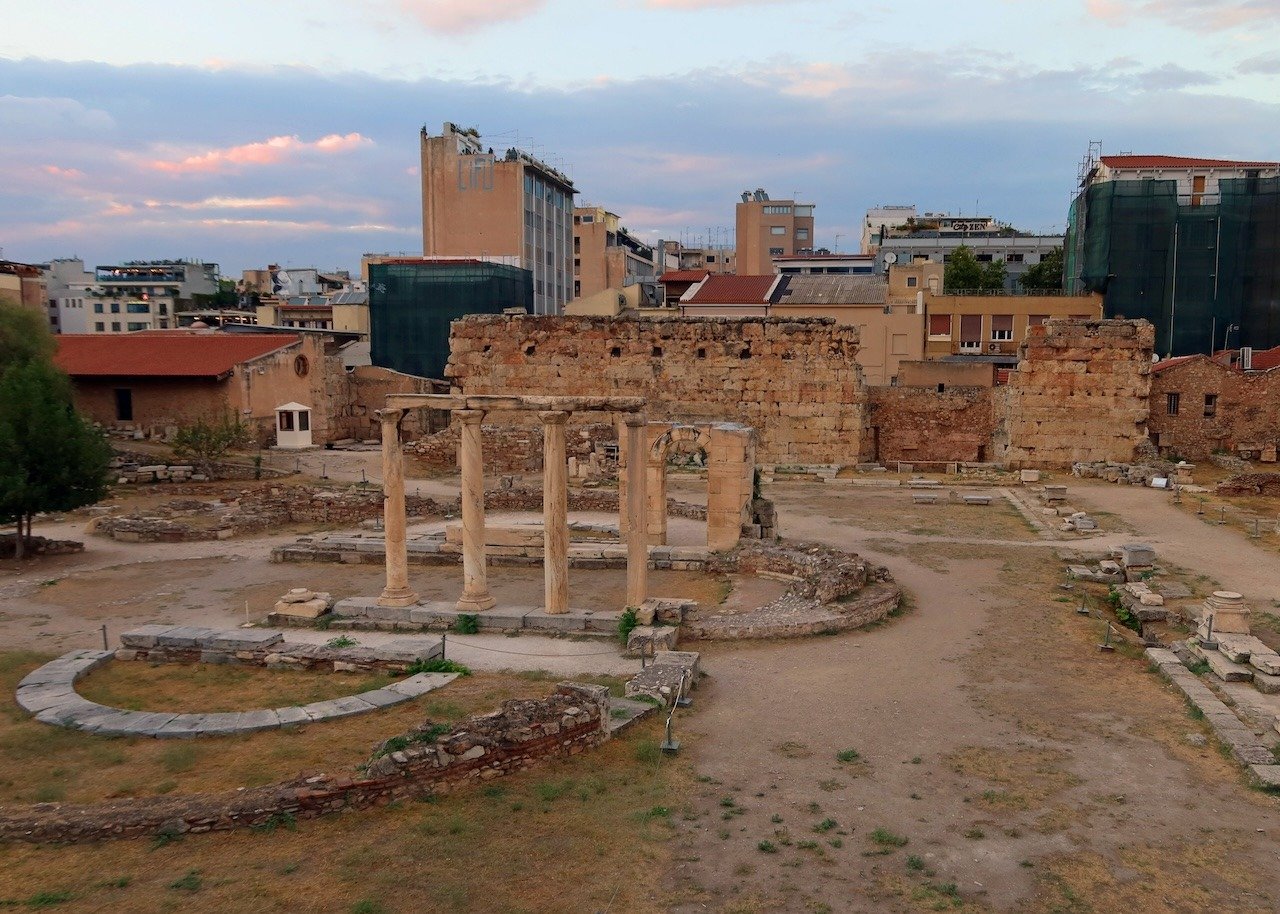
Athens Travel Guide
An Introduction
Athens, the ancient capital of Greece, welcomes visitors with its extraordinary blend of history, culture, and modern vibrancy. The city's origins date back over 3,200 years, making it one of the world's oldest continuously inhabited cities. Named after Athena, the Greek goddess of wisdom and warfare, Athens was the heart of Ancient Greece, a powerful civilization that laid the foundations of Western philosophy, democracy, and the arts. Over the centuries, Athens evolved from a small Mycenaean settlement into a sprawling metropolis, becoming the political, cultural, and economic center of Greece.Athens is full of archaeological wonders, awe-inspiring architecture, and a thriving contemporary culture that draws travelers from around the globe. The iconic Acropolis, crowned by the Parthenon, stands as a testament to the city’s glorious past, while the nearby Acropolis Museum offers a deeper understanding of ancient Greek art and history. Beyond the ancient ruins, Athens boasts vibrant neighborhoods like Plaka, with its charming streets and Neoclassical buildings, and Monastiraki, known for its lively flea market. The city's cultural richness is further exemplified by its museums, such as the National Archaeological Museum, which houses some of the finest artifacts from ancient Greece.
Whether you are captivated by its ancient ruins and fascinating history, or simply drawn to its lively ambiance, Athens promises to leave a lasting impression. Before you embark on your journey to Athens, here are some more intriguing facts about Greece's capital city:
- The name "Athens" is derived from Athena, the city's patron goddess, who was believed to have bestowed the olive tree upon the city as a gift of peace and prosperity. The olive tree became a symbol of the city, representing its wealth and endurance.
- The Acropolis, one of the most famous landmarks in the world, was built in the 5th century BC during the Golden Age of Athens under the leadership of Pericles. The Parthenon, the centerpiece of the Acropolis, is dedicated to the goddess Athena and is considered the epitome of classical Greek architecture. The Parthenon served various purposes throughout its history, including being used as a church and even an ammunition depot by the Ottomans. It remained largely intact until the late 17th century, when it was damaged during the Siege of the Acropolis in 1687 by Venetian forces.
- Athens is home to the oldest theatres in the world, the Theatre of Dionysus, where many of the great works of ancient Greek drama by playwrights like Sophocles, Aeschylus, and Euripides were first performed. The Theatre of Dionysus was constructed in the 6th century BC, with seating for some 17,000 spectators at its height. While the theatre is no longer used today, its ruins are open to visitors.
- The Panathenaic Stadium, located in the heart of Athens, is the only stadium in the world built entirely of marble. It was originally constructed in the 4th century BC and later refurbished to host the first modern Olympic Games in 1896.
Athens Travel Guide: Quick Tips
Athens Travel Guide: Can't-Miss Attractions
No true Athens travel guide would be complete without a curated selection of the city's top sights! Athens is a city steeped in ancient history, vibrant culture, and awe-inspiring architecture. From exploring the legendary Acropolis and its iconic Parthenon to the National Archaeological Museum, Athens offers countless unforgettable experiences. Whether you are visiting for a weekend getaway or an extended stay, these are the four can't-miss attractions in Athens!
We've highlighted all the attractions we visited and adored with the universal symbol of love, ♡.
- The Acropolis & Parthenon: ♡ The Acropolis, crowned by the Parthenon, is the most iconic symbol of ancient Greece. This UNESCO World Heritage Site offers breathtaking views of Athens and a glimpse into the city’s rich history. Advance tickets are required and can be purchased on the Hellenic Heritage E-Ticket website.
- Ancient Agora of Athens: ♡ Once the heart of ancient Athens' public life, the Ancient Agora is now an archaeological site where visitors can explore ruins, including the well-preserved Temple of Hephaestus and the Stoa of Attalos, the later of which is home to the Museum of the Ancient Agora.
- National Archaeological Museum: ♡ This world-class museum houses one of the most significant collections of Greek antiquities, including the famous Mask of Agamemnon and the Jockey of Artemision, along with countless other treasures from ancient Greece.
- Acropolis Museum: ♡ The Acropolis Museum, located at the foot of the Acropolis in Athens, houses a vast collection of artifacts from the Acropolis site, including the original Caryatids and Parthenon marbles. This modern museum offers a stunning blend of ancient history and contemporary architecture, providing visitors with an immersive experience of Athens' rich cultural heritage.

Athens Travel Guide: Iconic Landmarks & Monuments in Greece's Capital City
Acropolis & Parthenon ♡
The Acropolis of Athens, a symbol of ancient Greek civilization, stands majestically on a hill overlooking the city and is home to some of the most iconic structures of classical antiquity. The most famous of these is the Parthenon, a temple dedicated to Athena, the city's patron goddess. Built in the 5th century BC during the Golden Age of Athens under Pericles, the Parthenon exemplifies the architectural brilliance of ancient Greece with its perfect proportions and intricate sculptural decorations.
Over the centuries, the Acropolis and the Parthenon have withstood invasions, natural disasters, and various changes in use, from a Christian church to a mosque, and even an ammunition depot. Despite significant damage, particularly during the 17th century, the Parthenon remains a powerful symbol of Athens' cultural and intellectual legacy. Today, the Acropolis is a UNESCO World Heritage Site, attracting millions of visitors who come to admire its enduring beauty and to explore the nearby Acropolis Museum, which houses many of the artifacts and sculptures from this ancient complex.
The Acropolis is open daily, however, opening hours differ based on the season. Advance tickets are required and can be purchased on the Hellenic Heritage E-Ticket website.
Ancient Agora ♡
The Ancient Agora of Athens was the heart of public life in ancient Athens and is one of the most significant archaeological sites in the city. Located northwest of the Acropolis, the Agora served as the central gathering place for Athenians, functioning as a marketplace, political hub, and social center. It was here that citizens of Athens would come to trade goods, discuss politics, attend religious ceremonies, and participate in the vibrant public life that characterized the city-state during its Golden Age.
The origins of the Agora date back to the 6th century BC. Over the centuries, it became a focal point of Athenian democracy, where citizens would meet to vote, discuss civic matters, and engage in the philosophical debates that laid the foundations of Western thought. The Agora was also home to numerous important buildings, temples, and statues, each contributing to its role as the civic and religious center of Athens.
The Temple of Hephaestus is one of the most well-preserved ancient Greek temples and a standout feature of the Ancient Agora. Located on the western edge of the Agora, this Doric temple is dedicated to Hephaestus, the god of fire, metalworking, and craftsmanship, and Athena, who is also the goddess of pottery and crafts. Construction of the temple began around 450 BC, shortly after the construction of the Parthenon. The preservation of the Temple of Hephaestus is remarkable; it remains largely intact with its original columns, frieze, and roof in place, providing an excellent example of classical Greek temple architecture.
The Stoa of Attalos is another prominent structure within the Ancient Agora, located on its eastern side. Originally built between 159 and 138 BCE, the Stoa was a gift to Athens from King Attalos II of Pergamon. The Stoa was a large, covered walkway or colonnade, serving as a commercial hub where merchants sold goods, and Athenians could meet and socialize. Its design was typical of Hellenistic architecture, featuring a double colonnade with Doric columns on the ground floor and Ionic columns on the upper level. The Stoa of Attalos was destroyed by the Herulians in 267 AD and lay in ruins for many centuries. However, it was reconstructed in the 1950s by the American School of Classical Studies at Athens. The reconstruction aimed to provide a vivid representation of what a stoa would have looked like in ancient Athens, and it now houses the Museum of the Ancient Agora.
The Museum of the Ancient Agora, located within the rebuilt Stoa, contains a collection of artifacts that provide insights into the daily life, politics, and culture of ancient Athens. The museum's exhibits include pottery, coins, sculptures, inscriptions, and tools that were used in the Agora.
Today, the Ancient Agora remains one of the most evocative archaeological sites in Athens, offering visitors a tangible connection to the city's ancient past. Walking through the ruins, one can imagine the activity that once took place in this space, from merchants peddling their wares to citizens debating the issues of the day. The site is a testament to the enduring legacy of Athenian democracy, philosophy, and culture, and it continues to inspire those who visit it.
The Ancient Agora of Athens is open daily. Opening hours differ based on the season.
Roman Agora (Roman Forum of Athens)
The Roman Agora in Athens, also known as the Roman Forum of Athens, was built during the Roman period, in the 1st century BC, and served as the city's main marketplace, replacing the older Ancient Agora as the center of commercial and public life. The construction of the Roman Agora was funded by Julius Caesar and Augustus. The site includes several important structures, such as the Gate of Athena Archegetis, the Fethiye Mosque, and the Tower of the Winds, an ancient clock tower and weather station. (In fact, the Tower of the Winds is the only surviving tower of its kind from classical antiquity.) The Roman Agora played a central role in the daily life of ancient Athenians, and its ruins offer insight into the commercial and civic activities of the time. The site is significant not only for its historical and architectural value but also as a representation of the cultural blending that occurred during the Roman occupation of Greece.
The Roman Agora is open daily. Opening hours differ based on the season.
Panathenaic Stadium
The Panathenaic Stadium, also known as Kallimarmaro, is a historic stadium in Athens built entirely of marble. It was originally constructed in the 4th century BC for the Panathenaic Games, a religious and athletic festival held in honor of the goddess Athena. The stadium was later rebuilt in marble by the Athenian statesman Lycurgus and underwent further renovations by the Roman Emperor Hadrian. It fell into disuse during the Byzantine period but was restored in the 19th century to host the first modern Olympic Games in 1896. The Panathenaic Stadium is significant as the only stadium in the world made entirely of marble and as a symbol of Athens' ancient athletic tradition and its role in the revival of the Olympic Games. Today, it remains a popular tourist attraction and is occasionally used for ceremonial events. During the 2004 Olympic Games in Athens, the Panathenaic Stadium served as the finish line for both the men and women's marathon. The stadium was also used for archery events.
Hadrian's Library
Hadrian’s Library, located near Monastiraki Square, was built by the Roman Emperor Hadrian in 131-132 AD as part of his extensive building program to promote Athens as a cultural center. The library was more than just a place for storing books; it was a grand complex that included reading rooms, lecture space, and a central courtyard surrounded by a colonnade. It was designed to be a center of learning and intellectual activity. Although much of the structure was destroyed during the Heruli invasion of 267 AD, the remains of the library, including several of its columns and sections of the walls, offer a glimpse into its former grandeur. Hadrian's Library is significant as a symbol of the Roman influence on Athens and as a testament to the city's enduring legacy as a center of knowledge and culture.
Syntagma Square
Syntagma Square, or Constitution Square, is the political and social heart of Athens. It is named after the constitution (syntagma) granted by King Otto of Greece in 1843 after a military uprising. The square is dominated by the Old Royal Palace, originally constructed as a royal residence in the 19th century, but later became home to the Hellenic Parliament.
One of the square's main attractions is the changing of the guard ceremony at the Tomb of the Unknown Soldier, which is performed by the Evzones, the elite unit of the Greek Army who stand guard at the Tomb of the Unknown Soldier and Presidential Mansion in Athens. The guards are affectionately known for their pom-pom shoes and pleated skirts. The changing of the guard takes place every hour; however, a new wreath is placed at the grave every Sunday at 11:00 AM in an official changing of the guard ceremony.
Syntagma Square is a major hub for transportation and a popular gathering place for both locals and tourists. It has been the site of numerous historical events, including protests and celebrations, and continues to be a focal point for public life in Athens. Its central location also makes it a convenient starting point for exploring other parts of the city.
Monastiraki Square
Monastiraki Square is one of Athens' busiest areas, located in the heart of the city. The square is named, Monastiraki, or "little monastery," after the Panagia Pantanassa Church, also known as the Holy Church of the Virgin Mary Pantanassa, a small 10th-century Byzantine church that still stands in the area. Monastiraki is a hub of activity, famous for its lively flea market where visitors can shop for antiques, souvenirs, clothing, and more. The square is surrounded by a mix of historic and modern buildings, including the Ottoman-era Tzistarakis Mosque, which now houses the Museum of Greek Folk Art.
Monastiraki Square is also close to several important ancient sites, such as the Ancient Agora and Hadrian's Library, making it a key point of interest for those exploring Athens. Monastiraki Square is a transit hub and a popular thoroughfare for tourists. Therefore, stay vigilant as pickpockets are common in this area, particularly near the metro station entrance.
Theatre of Dionysus
The Theatre of Dionysus is the oldest permanent theater in the world, located on the southern slope of the Acropolis. Dedicated to Dionysus, the god of wine and theater, this venue is considered the birthplace of Greek drama. The theater was initially built in the 6th century BC and expanded in the 4th century BC to accommodate up to 17,000 spectators. It was here that many of the greatest works of ancient Greek playwrights, such as Sophocles, Aeschylus, and Euripides, were first performed. The Theatre of Dionysus is significant not only for its historical value as the world's first theater but also as a symbol of the cultural achievements of ancient Athens. While the theatre is no longer used for performances today, it is open to the public. The site provides a fascinating glimpse into the origins of Western theater and the role of drama in ancient Greek society.
Odeon of Herodes Atticus
The Odeon of Herodes Atticus is a stone theater located on the southwest slope of the Acropolis. Built sometime between in 160-174 AD by the wealthy philosopher and benefactor Herodes Atticus in memory of his wife, Regilla. The Odeon was originally covered with a wooden roof and had a seating capacity of around 5,000 people. It was used for musical performances, and it quickly became one of the most prestigious venues in the Roman world. Today, the Odeon has been restored and continues to be a significant cultural venue, hosting performances during the Athens Epidaurus Festival every summer. The theater's well-preserved seating and backdrop, combined with its location beneath the Acropolis, make it one of the most atmospheric and historic performance spaces in the world.
Temple of Olympian Zeus (Olympieion)
The Temple of Olympian Zeus, also known as the Olympieion, is one of the most significant ancient monuments in Athens. Construction of the temple began in the 6th century BC, but it was not completed until the reign of the Roman Emperor Hadrian in the 2nd century AD, nearly 700 years later. The temple was built to honor Zeus, the king of the Olympian gods, and was once the largest temple in Greece, boasting 104 colossal columns. Today, only 15 of these massive Corinthian columns remain standing, with a 16th lying on the ground, giving visitors a sense of the temple's original grandeur.
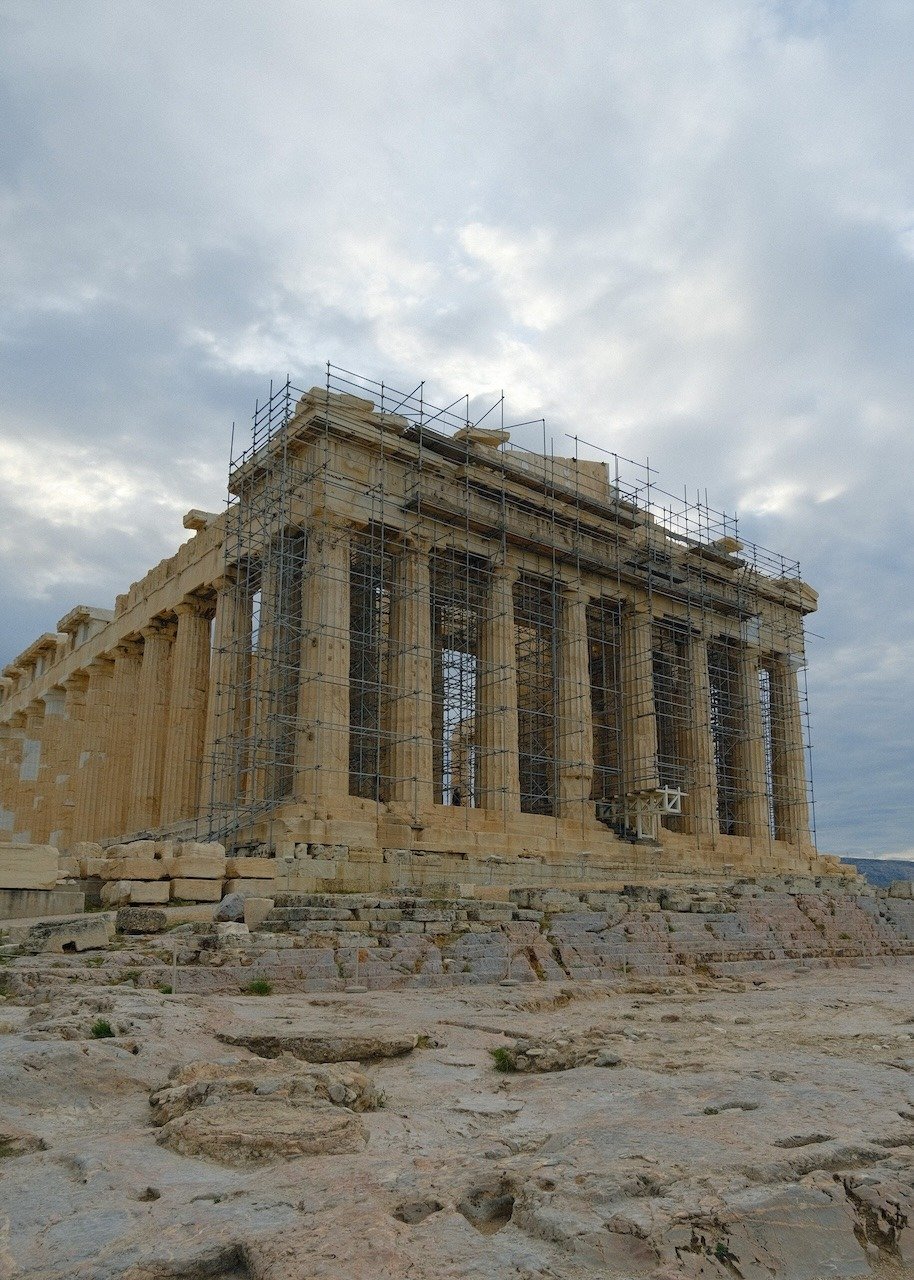
Athens Travel Guide: Top Athens Museums
Athens is filled with world-class museums, each offering a unique glimpse into art, history, and culture. Before planning your visit, make sure to check the most up-to-date opening hours, as museum schedules differ by the season. Most museums are also closed, or have reduced hours, on the following days: January 1st, Orthodox Good Friday (April 18, 2025), Orthodox Holy Saturday (April 19, 2025), Orthodox Easter Sunday (April 20, 2025), Orthodox Easter Monday (April 21, 2025), May 1st, December 24th, December 25th, December 26th, and December 31st. Here is a guide to the top Athens museums that you will not want to miss!
For the art aficionado:
- National Museum of Contemporary Art Athens (ΕΜΣΤ): The National Museum of Contemporary Art Athens (EMΣT) is a premier institution dedicated to contemporary art in Greece. Located in the Koukaki neighborhood, near the Syngrou-Fix metro station, the museum occupies a striking building that was once a brewery. EMΣT showcases a diverse collection of works by Greek and international artists, covering a wide range of media including painting, sculpture, video, and performance art, with a focus on the 21st century. The museum is particularly noted for its dynamic exhibitions that engage with current social, political, and cultural issues. Visitors can also enjoy panoramic views of Athens from the museum's terrace, making it a cultural highlight in one of the city’s most vibrant neighborhoods. EMΣT is closed on Mondays.
- Museum of Cycladic Art: Located in the upscale Kolonaki area, the Museum of Cycladic Art is renowned for its extensive collection of artifacts from the Cycladic civilization, which flourished in the Aegean Sea during the Early Bronze Age (3rd century BC). The museum's collection features the marble figurines, pottery, and tools that are characteristic of this ancient culture. The Cycladic figurines, with their minimalist and abstract forms, have influenced modern artists worldwide. In addition to Cycladic art, the museum also houses collections of ancient Greek and Cypriot art, offering visitors a broader understanding of the ancient cultures that shaped the region. The Museum of Cycladic Art is closed on Tuesdays.
- Basil & Elise Goulandris Foundation: The Basil & Elise Goulandris Foundation, located in Pangrati, is a relatively new addition to Athens' museum scene. This museum is home to an impressive collection of modern and contemporary art, featuring works by renowned artists such as Van Gogh, Cézanne, Monet, Picasso, and Rodin, alongside notable Greek artists like Yannis Tsarouchis and Yannis Moralis. The collection reflects the discerning tastes of its founders, Basil and Elise Goulandris, who were prominent art collectors and philanthropists. The museum's sleek, modern design and its well-curated exhibitions make it a cultural gem in the heart of Athens. The Basil and Elise Goulandris Foundation is closed on Tuesdays.
-
National Gallery - Alexandros Soutsos Museum: The National Gallery - Alexandros Soutsos Museum, located near The Ilisian Hotel (formerly the Hilton Athens) in the central area of Pangrati, is Greece's foremost institution for fine arts. After an extensive renovation and expansion, the museum reopened to the public in 2021 with a stunning new space that houses a vast collection of Greek and European art from the 14th century to the present day. The National Gallery is a must-visit for art lovers interested in exploring the evolution of Greek painting and its dialogue with European art movements. The National Gallery is closed on Tuesdays.
For the history lover:
- Acropolis Museum: ♡ Situated at the foot of the Acropolis in the Makriyanni neighborhood, the Acropolis Museum is one of the most important archaeological museums in Greece. Designed by architect Bernard Tschumi, the museum’s modern glass structure offers incredible views of the Acropolis, while also showcasing the well-preserved ruins of an ancient Athenian neighborhood that once stood on this site. The real highlight, however, is the extensive collection of artifacts from the Acropolis. The museum's highlights include the Parthenon Marbles (Parthenon Sculptures), five of the six Caryatids from the Erechtheion, and the intricately carved friezes that once adorned the Parthenon. The Acropolis Museum provides an experience that connects visitors with the ancient history of Athens and allows you to see the details of the Acropolis up-close, making it an essential stop for anyone visiting the city. The Acropolis Museum is open daily. Tickets can be purchased in-advance on the Acropolis Museum website.
-
National Archeological Museum: ♡ Located in the Exarchia neighborhood, the National Archaeological Museum is the largest and most significant museum in Greece, renowned for its vast collection of artifacts from all periods of Greek antiquity. The museum's highlights include the golden Mask of Agamemnon, the Antikythera Mechanism (an ancient analog computer), the Jockey of Artemision, and the Artemision Bronze which has been thought to depict either Zeus or Poseidon. Its extensive collection spans over 11,000 exhibits, offering a comprehensive overview of Greek history and culture from the Neolithic period to late antiquity. The museum is a treasure trove for history enthusiasts and provides an unparalleled insight into the ancient world. The National Archaeological Museum is open daily. Tickets can be purchased in-advance on the Hellenic Heritage E-Ticket website.
- Benaki Museum - Museum of Greek Culture: Situated in the elegant Kolonaki neighborhood, the Benaki Museum - Museum of Greek Culture is a significant cultural institutions within Athens. This museum offers a comprehensive overview of Greek history and culture, from prehistoric times to the 20th century. The museum's extensive collection includes ancient artifacts, Byzantine art, and traditional Greek clothing. The museum’s location in a Neoclassical mansion adds to its charm, making it a must-visit for those interested in the rich cultural heritage of Greece. The Benaki Museum - Museum of Greek Culture is closed on Tuesdays.
- Jewish Museum of Greece: Nestled in the Plaka neighborhood, the Jewish Museum of Greece offers a deep dive into the history and culture of the Jewish community in Greece. The museum's exhibits cover over 2,300 years of Jewish presence in the region, showcasing religious artifacts, traditional costumes, and historical documents. Highlights include a large collection of Judaica and the moving exhibits on the Holocaust, which detail the persecution of Greek Jews during World War II. The museum provides an important perspective on the multicultural history of Greece and is a poignant reminder of the resilience of the Jewish community. The Jewish Museum of Greece is closed on Saturdays.
For families:
- Hellenic Motor Museum: Located near the National Archaeological Museum in the central area of Exarchia, the Hellenic Motor Museum is a unique attraction for car enthusiasts and families. The museum houses an impressive collection of over 100 classic and vintage cars, spanning from the early 20th century to the present. Highlights include rare models from Rolls-Royce, Ferrari, and Bugatti, as well as the iconic 1980s DeLorean. The museum's innovative design, with its circular ramps and futuristic architecture, adds to the experience, making it a fascinating destination for those interested in automotive history and design. The Hellenic Motor Museum is closed on Mondays.
- Museum of Ancient Greek Technology - Kostas Kotsanas: Located in the Kolonaki neighborhood, the Museum of Ancient Greek Technology - Kostas Kotsanas offers a fascinating look into the technological innovations of ancient Greece. The museum features over 300 working reconstructions of ancient Greek inventions, including the Antikythera Mechanism. These exhibits demonstrate the advanced engineering and scientific knowledge of the ancient Greeks, often considered the foundation of modern technology. The museum provides an interactive and educational experience, making it a great destination for families and anyone interested in the technological achievements of the ancient world. The Museum of Ancient Greek Technology - Kostas Kotsanas is open daily.
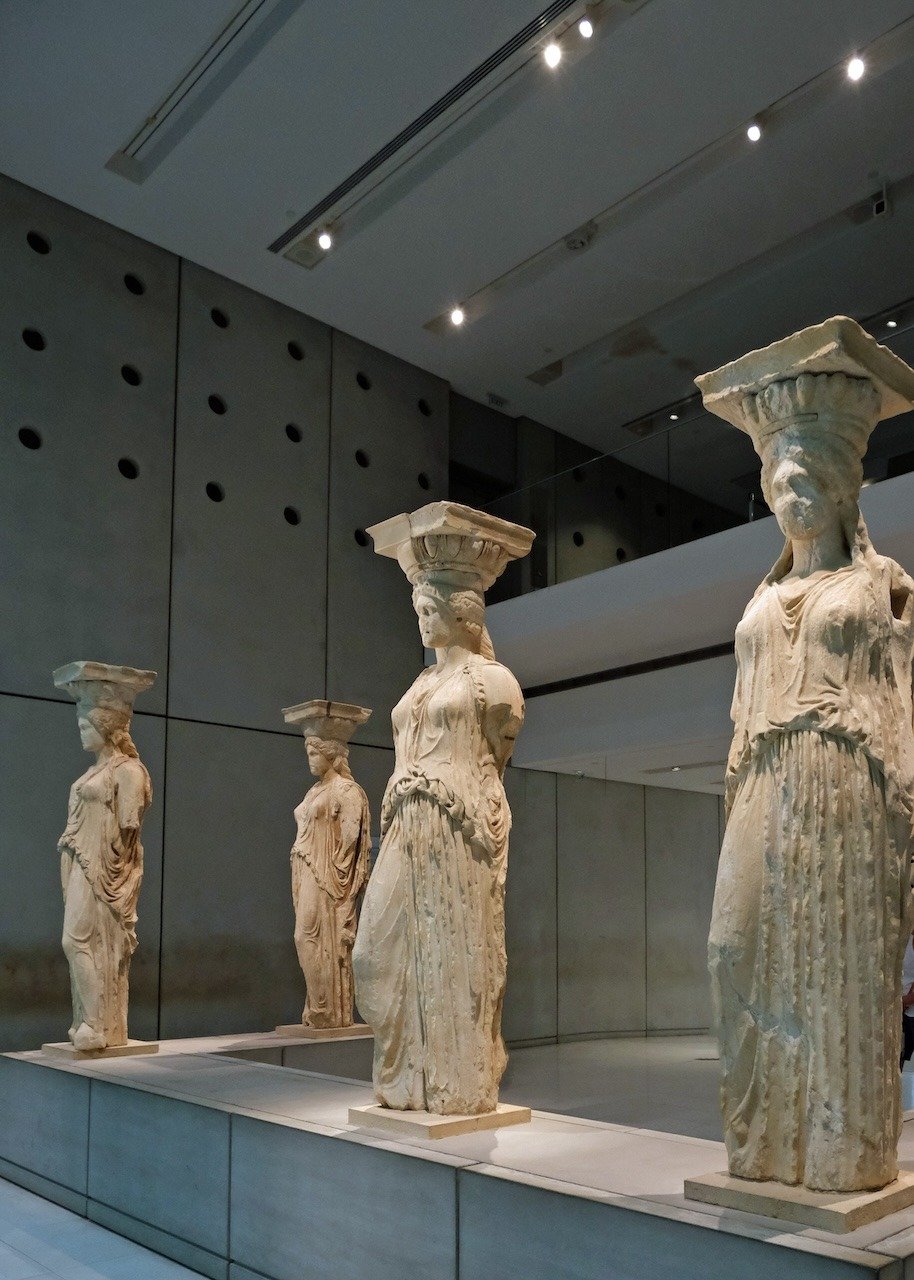
Athens Travel Guide: Popular Churches
While Athens is dotted with spectacular churches, we have curated a list of some of the most popular ones for visitors to explore. Please note that modest dress is required in all Greek Orthodox churches and monasteries. This entails covering your knees and shoulders, for both men and women.
Church of Kapnikaréa
The Church of Kapnikarea is one of Athens' oldest and most charming Greek Orthodox churches, dating back to the early 11th century. Located in the Monastiraki neighborhood, right along the main shopping street of Ermou, the church is a significant example of Middle Byzantine architecture. Its quaint, domed structure stands in stark contrast to the modern surroundings. The church is dedicated to Panagia (Virgin Mary), and its interior features beautiful frescoes and icons that reflect its long history as a place of worship.
Metropolitan Cathedral of Athens (Mētrópolis)
The Metropolitan Cathedral of Athens, also known as the "Mētrópolis," or the Greek Orthodox Holy Metropolitan Church of the Annunciation of the Virgin Mary, is the main cathedral of the Greek Orthodox Church in Athens and home to the Archbishop of Athens and All Greece (the head of the Greek Orthodox Church). Located in the heart of the city, near Syntagma Square in the Plaka neighborhood, the cathedral was completed in 1862 and is dedicated to the Annunciation of the Virgin Mary. The church's grand exterior is a blend of Byzantine and Neoclassical architectural styles, while the interior is richly decorated with impressive frescoes and icons. The Metropolitan Cathedral is also the site of important national and religious ceremonies, making it a key spiritual center in Athens.
Church of St. Mary Pantanassa
The Church of St. Mary Pantanassa, situated in Monastiraki Square, is a small but historically significant Byzantine church that dates back to the 10th century. Originally part of a larger monastery, the church is one of the few surviving remnants of medieval Athens. The Church of St. Mary Pantanassa also gives the Monastiraki neighborhood its name, as Monastiraki quite literally means "little monastery." Despite its modest size, the Church of St. Mary Pantanassa is an important spiritual landmark in the heart of the city's vibrant Monastiraki neighborhood. Its interior features a collection of icons and a serene atmosphere that contrasts with the lively square outside, offering visitors a glimpse into the religious life of ancient Athens.
Church of St. Isidore
Athens Travel Guide: Gardens & Parks
With numerous parks and gardens scattered throughout Athens, there is an abundance of green space to explore and enjoy, whether for a relaxing picnic or a leisurely stroll. Here are some of the most popular:
National Garden
The National Garden, located in the heart of Athens next to Syntagma Square and the Greek Parliament in the Plaka neighborhood, is one of the city's most beloved green spaces. Covering 38 acres, this lush park was originally commissioned in the 19th century by Queen Amalia, the first queen of Greece, as the royal garden for the adjacent palace. The National Garden offers a peaceful retreat from the city with its shaded paths, ponds, and diverse collection of plants and trees from around the world. The garden is also home to several historical monuments, a small zoo, and a children’s library, making it a popular spot for both locals and tourists to relax and unwind.
Mount Lycabettus
Mount Lycabettus is a prominent limestone hill that rises approximately 1,000 feet (300 meters) above Athens, offering breathtaking panoramic views of the city and the Acropolis. Located in the Kolonaki neighborhood, this natural landmark is one of Athens' most iconic green spaces and a popular destination for both visitors and locals. According to legend, the hill was created by the goddess Athena when she dropped a rock she was carrying to the Acropolis. Today, visitors can hike or take a funicular to the summit, where they will find the small whitewashed Chapel of St. George, a café, and an open-air theater that hosts concerts during the summer months. The combination of natural beauty and historical significance makes Mount Lycabettus a must-visit spot in Athens.
Philopappos Hill (Filopappou Hill)
Philopappos Hill, also known as the Filopappou Hill, is a historic and scenic green space located just southwest of the Acropolis in the Koukaki neighborhood. This hill is named after the Philopappos Monument, an impressive tomb dedicated to Julius Antiochus of Philopappos, a prominent benefactor of Athens. The hill is crisscrossed with walking paths that lead visitors through ancient ruins, pine groves, and stunning viewpoints overlooking the city, the Acropolis, and the Saronic Gulf. Its tranquil atmosphere and history make it a popular spot for photographers looking for some of the best views of Athens.
Pedion tou Areos (Pedion Areos)
Pedion tou Areos, or Pedion Areos, is one of Athens' largest public parks, covering approximately 70 acres in the central neighborhood of Exarchia. The park was created in 1934 and is dedicated to the heroes of the Greek War of Independence. Named after the Greek god of war, Ares, Pedion tou Areos features a blend of formal gardens, tree-lined paths, and open spaces, making it a significant green lung in the urban landscape of Athens. The park is home to several important monuments, including an equestrian statue of King Constantine I and several busts in honor of the heroes of the Greek War of Independence.
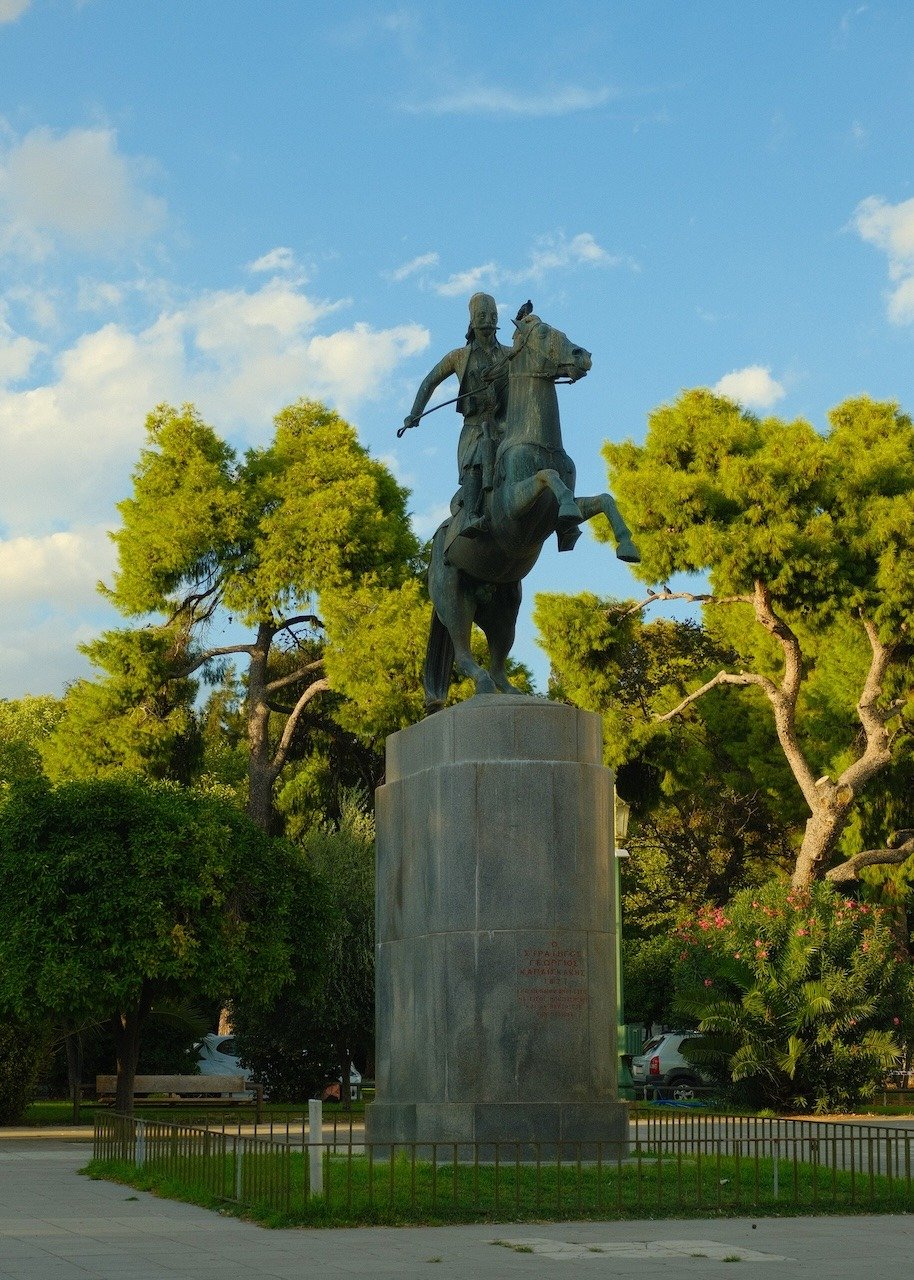
Athens Travel Guide: Good Eats
The food in Athens is celebrated for its vibrant flavors and diverse offerings, from traditional Greek dishes in cozy restaurants to innovative creations in contemporary eateries. Whether you are indulging in feta cheese and olives, or enjoying a glass of ouzo, Athens’ gastronomy is a true reflection of its rich heritage and warm, welcoming culture.
Speciality Foods & Drinks:
Travelers visiting Athens should indulge in a variety of iconic dishes and treats that capture the essence of the city's food scene. Some must-try specialties from Athens include:
-
Moussaka: A classic Greek dish made with layers of eggplant, minced meat (usually lamb or beef), and béchamel sauce, baked to golden perfection. It’s a hearty, flavorful meal that embodies the richness of Greek cuisine.
-
Souvlaki: Skewers of grilled meat, typically pork or chicken, often served with pita bread, tomatoes, onions, and tzatziki. It’s a popular street food and a must-try for anyone visiting Athens.
-
Spanakopita: A savory pie made with spinach, feta cheese, and layers of crispy phyllo dough. This delicious pastry is a common snack or light meal.
-
Tzatziki: A refreshing dip made from Greek yogurt, cucumber, garlic, and olive oil. It is often served with bread or as a condiment with grilled meats.
-
Dolmades: Vine leaves stuffed with a mixture of rice, herbs, and sometimes meat. They are often served as part of a meze platter.
-
Gyro: Similar to souvlaki, but the meat (usually pork, chicken, or lamb) is cooked on a vertical rotisserie and served wrapped in pita with tomatoes, onions, tzatziki, and sometimes fries.
-
Baklava: A sweet, rich pastry made with layers of phyllo dough, nuts, and honey syrup. It is a quintessential Greek dessert that is both sticky and satisfying.
- Loukoumades: Small, deep-fried dough balls soaked in honey syrup and sprinkled with cinnamon and nuts. These delicious treats are often called Greek doughnuts and are a beloved dessert in Athens.
-
Horiatiki (Greek Salad): A fresh salad made with tomatoes, cucumbers, onions, olives, and a large slab of feta cheese, all drizzled with olive oil and sprinkled with oregano.
-
Greek Coffee: A strong, unfiltered coffee served in a small cup, with grounds settled at the bottom. Do not drink the coffee grounds as they can be extremely bitter.
-
Ouzo: A popular anise-flavored spirit, that is usually served as an aperitif.
- Freddo Coffee: A modern Athenian favorite, a Freddo comes in two varieties: Freddo Espresso, a chilled espresso served over ice, and Freddo Cappuccino, a cold espresso topped with frothy milk. Both are perfect for cooling off on a hot day in Athens.
Popular Restaurants:
The number of outstanding dining options in Athens could easily fill an entire website on its own! To help you explore the city's amazing food scene, here are some of the most popular places to eat in Athens.
Looking for additional restaurant recommendations for your trip to Athens? Check out the links below.
Popular Cocktail Bars & Nightlife Spots:
Athens is famous for its lively and diverse nightlife. The city truly comes alive after dark. Some of our favorite spots in Athens are below.
Athens Shopping Guide
Athen's diverse retail landscape ensures that every shopper, whether seeking high fashion, unique souvenirs, or gourmet treats, will find something to treasure. Prices in Athens, particularly for typical Greek souvenirs, are generally lower than on the Greek Islands, making Athens an excellent place to do your shopping. Some popular shopping areas in Athens include:
-
Ermou Street: Ermou Street is one of Athens' most famous shopping destinations, stretching from Syntagma Square to Monastiraki Square. This bustling pedestrian street is lined with a mix of high-street fashion brands, Greek designer boutiques, and international retailers, making it a favorite spot for both locals and tourists. Along Ermou, you’ll also find a variety of shops offering traditional Greek souvenirs, jewelry, and accessories.
-
Monastiraki Flea Market: The Monastiraki Flea Market is a vibrant and eclectic shopping area located in the historic Monastiraki neighborhood, just below the Acropolis. The market is full of vendors selling everything from antiques and vintage items to handmade crafts, jewelry, and traditional Greek products. It is a great spot for those looking for souvenirs.
-
Voukourestiou Street: Voukourestiou Street is Athens' answer to luxury shopping, located in the upscale Kolonaki neighborhood. This elegant street is home to high-end designer boutiques, luxury jewelry stores, and exclusive international fashion brands. It is a haven for those looking to indulge in premium shopping experiences. While Voukourestiou Street may not be the go-to place for budget-friendly souvenirs, it is perfect for picking up a special piece of Greek designer fashion or luxury goods.
- Designer Outlet Athens: Located just outside the city in the suburb of Spata, Designer Outlet Athens offers a wide range of discounted designer and high-street brands. The mall is a popular destination for both locals and tourists seeking great deals on fashion, accessories, and home goods. With its open-air layout and charming village-like atmosphere, shopping here is a pleasant experience.
Popular Souvenirs from Athens
- Gourmet Foods: Athens offers an array of gourmet food products that make for excellent souvenirs. Olive oil is a staple of Greek cuisine, and bringing home a bottle of high-quality extra virgin olive oil allows you to savor the flavors of Greece long after your trip. Greek honey is another must-try, with varieties like thyme honey or pine honey renowned for their rich, natural sweetness. You can easily find ground coffee or even a traditional briki (coffee pot) to recreate the Greek coffee experience at home. Finally, spices and herbs, such as oregano, thyme, and saffron, are often packaged attractively and make for a fragrant reminder of Greek cuisine.
- Olive-Based Products: You can also find olive-based products like soaps, lotions, and even olive wood kitchenware, all of which make for excellent gifts.
- Textiles: Since Greece is the largest producer of cotton in Europe, textiles such as embroidered tablecloths, pillow covers, and even clothes are another popular souvenir option.
- Komboloi (Worry Beads): Komboloi, or worry beads, are a traditional Greek item made of beads strung on a cord. Historically used for relaxation or meditation, they are now a popular souvenir, available in various materials such as amber, wood, or glass.
- Ceramics & Pottery: Greek ceramic pottery, often hand-painted with traditional designs or scenes from Greek mythology, is a beautiful and culturally significant souvenir. Whether it is a vase, plate, coffee cups, or a decorative piece, these items make for timeless keepsakes.
- Jewelry: Greek jewelry, especially pieces incorporating the Evil Eye 🧿, is a popular souvenir. You can find finely crafted items made from gold, silver, and semi-precious stones in shops throughout Athens, particularly in the Monastiraki and Plaka neighborhoods. If you are looking for a reputable jeweler in Athens, we definitely recommend Maris Exclusive Jewelry in the Monastiraki neighborhood. Our experience with this family-run jewelry shop was exceptional; they offered fair prices and an impressive range of pieces across different price points.
Tax-Free Shopping in Athens
Tax-free shopping in Athens allows non-EU residents to claim a refund on the Value Added Tax (VAT) paid on purchases. To qualify, you must be visiting Greece for less than 3 months. In Greece, you must spend at least €50, including VAT, in one purchase amount to be eligible for tax-free shopping. When making a purchase, inform the retailer that you wish to shop tax-free. They will provide you with a tax refund form (detaxe form), which you need to complete. Ensure the retailer's details, your passport information, and purchase information are correctly recorded.
Before leaving the EU, you must have your tax refund forms validated by customs. At the airport, allow extra time to complete this process before your flight. Present your completed forms, passport, purchases, and receipts at the customs desk for stamping. This step is crucial, as you will not receive a refund without the customs stamp.
Global Blue, Planet Tax Free, and other tax-free companies facilitate the VAT refund process. The company that you need to provide your Tax-Free Form to after it has been validated should be clearly stated on your paperwork. You will need to provide them with your completed form, show your passport, and provide your contact information when processing the refund. Should you find yourself in a situation where mailing your Tax-Free Form becomes necessary, do not forget to take photos of all paperwork, including receipts, prior to mailing them off. Refunds processed via mail may take anywhere from 4-8 weeks, if not longer, to be received.
After a customs validation, you can receive your refund in cash immediately, or opt for a credit card refund, which typically processes within 3 to 5 days. The cash can be offered in both Euros and your home currency. Be sure to ask if any additional fees apply before selecting your choice of refund. It is important to note that not all purchases are eligible for VAT refunds, such as services and consumables. Additionally, there may be administrative fees deducted from your refund, so it is advisable to inquire about any potential fees before completing the tax-free shopping process.
Athens Travel Guide: Transportation
While the tourist heart of Athens, particularly the area surrounding the Acropolis is incredibly pedestrian friendly, Athens also boasts an efficient public transportation system. Athens offers both Metro and bus services, making it easy to explore its various neighborhoods and iconic landmarks. We recommend using the Citymapper app to help you navigate Athens during your trip. It seems to work more efficiently, from our experience, than Google Maps.
Airport:
Athen's main airport, Athens International Airport Eleftherios Venizelos (ATH), is located about 12 miles (20 kilometers) east of the city center in the suburb of Spata. It is the largest and busiest airport in Greece, serving as a major hub for international and domestic flights.
Transportation To/From ATH:
- Metro (Line 3): The Athens Metro offers a direct connection from the airport to the city center. Metro Line 3 (Blue Line) runs from the airport to Syntagma Square and Monastiraki. The journey takes about 40 minutes to reach central Athens. Trains run approximately every 30 minutes from early morning until late evening, making it a popular choice for travelers.
- Airport Express Buses: Several 24-hour express buses link the airport with different parts of the city. The most popular route is X95, which runs between the airport and Syntagma Square in the city center. The journey takes around 50-60 minutes, depending on traffic. Other bus routes, such as X96, connect the airport to Piraeus Port.
- Suburban Railway (Proastiakos): The suburban railway connects Athens International Airport to Larissa Station, the city's main train station, as well as other suburban areas. From Larissa Station, travelers can switch to the metro or other public transport lines to reach their destination.
- Taxi: Taxis are readily available outside the airport terminal. A taxi ride from the airport to the city center typically takes around 35-45 minutes, depending on traffic, with a flat fare of approximately €40 during the day and €55 at night.
- Rideshare Apps: While Uber and other rideshare companies do not operate in Greece, you can use their apps to call a licensed taxi. Prices for taxis called through rideshare services are generally the same as the traditional taxis waiting at the taxi stand.
Local Transit:
While most of Athens is pedestrian-friendly, you may need to rely on public transportation to get around, especially if you are headed to the Port of Piraeus. The main public transportation options in Athens are outlined below.
- Metro: The Athens Metro is the most popular option for tourists due to its reliability, speed, and coverage of major attractions. The metro runs daily from 5:00AM until midnight, with extended hours until 2:00AM on Lines 2 and 3 on Friday and Saturday nights. On average, the metro runs every 5 to 6 minutes. The system consists of three lines:
- Line 1 (Green Line): Runs from Kifisia in the north to Piraeus port in the south, passing through key stops like Monastiraki and Omonia.
- Line 2 (Red Line): Connects Anthoupoli to Elliniko and passes through Syntagma Square, a central tourist hub.
- Line 3 (Blue Line): Runs from Nikaia to Athens International Airport and includes stops like Monastiraki and Syntagma Square.
- Buses: Athens has an extensive bus network, including trolleybuses, which run on fixed electrical lines. While they cover a wide area, buses can be less reliable during peak hours due to traffic. For tourists, the express airport buses (such as the X95 to/from Syntagma) are particularly useful. The X80 bus is also notable, as it offers a route from Piraeus to central Athens, passing major landmarks like the Acropolis Museum and Syntagma Square.
- Rideshare Apps: As previously mentioned, Uber does not operate in Greece, however, the app can still be used to book a licensed taxi. These apps are great for travelers concerned about the language barrier, those who are traveling to destinations within Athens that are not as readily serviced by other public transportation methods, and/or when traveling with luggage.
- Taxis: Taxi stands are readily available throughout Athens, making it convenient for residents and visitors to access taxi services. These taxi stands are typically located at key locations such as train stations, major squares, tourist areas, and hotels. As with any large city, make sure you are getting in an official taxi. When in doubt, have your hotel call a taxi on your behalf.
Public Transportation Ticketing & Tips
Tourists typically use the Ath.ena Card, a reusable smart card that can be loaded with various fare types, including single trips or multi-day passes. It works across all modes of transportation—metro, bus, tram, and trolleybus. There is also a special tourist ticket that offers unlimited travel for three days and includes a round-trip to the airport. Day passes and standard paper tickets (valid for 90 minutes) are also available.
As always, be mindful of pickpockets on any public transportation in Athens. Keep your belongings secure by wearing bags across your body and keeping them zipped and in front of you. Avoid displaying valuable items like phones and wallets, and stay alert to your surroundings, particularly during rush hours.
More information on tickets, fares, and more can be found on the This is Athens website.
Ferry & Cruise Ports:
Unlike most European cities where trains are the primary mode of connecting to nearby destinations, Greece relies heavily on ferries. With around 6,000 islands, 227 of which are inhabited and many being popular tourist spots, ferries are often the most convenient way to travel from Athens to the islands and embark on an island-hopping adventure.
Ferries run year-round on some routes, but schedules vary by season and route. Some of the Greek Islands close during the autumn and winter months (October through April), including popular destinations like Mykonos. If you plan to visit the Greek Islands during the off-season, larger islands like Crete, Rhodes, and Santorini maintain year-round connections to Athens and are your best options.
Piraeus
Piraeus is the main port of Athens, servicing both cruise ships and ferries. The Port of Piraeus is extremely large, so be sure to check which terminal your ship or ferry is departing from before you head to the port. Some of the most popular ferry destinations serviced via Piraeus include:
- Cyclades Islands: Mykonos, Santorini, Paros, Naxos, Ios
- Dodecanese Islands: Rhodes, Kos, Patmos
- Saronic Gulf Islands: Aegina, Hydra, Poros
- Crete: Heraklion, Chania, Sitia
- Northern Aegean Islands: Lesbos, Chios, Samos
- Peloponnese: Kythira
Piraeus is easily accessible via several public transportation options:
- Metro (Line 1): The most common and direct route is by taking Metro Line 1 (Green Line) from central Athens. It runs from Monastiraki or Omonia stations and takes about 20-30 minutes to reach Piraeus Station, located near the port.
- Suburban Railway (Proastiakos): This train also serves Piraeus and can be boarded at Larissa Station or other stops along its route. It’s a good option for reaching the port from further out in the suburbs or after arriving from the airport.
- Buses: The X96 express bus runs 24/7 from Athens International Airport to Piraeus, passing through various city stops.
Rafina
Rafina is the second-largest ferry port serving Athens and is located about 19 miles (30 kilometers) northeast of the city center, near Athens International Airport. It is a convenient option for travelers staying in or arriving from the eastern part of Athens or from the airport. Rafina is known for its proximity to the Cycladic Islands, and ferries from Rafina primarily serve islands such as:
- Andros
- Tinos
- Mykonos
- Paros
- Naxos
Getting to Rafina
- Bus: The most common way to get to Rafina from central Athens is by intercity bus (KTEL). Buses depart regularly from the Pedion Areos area in central Athens, and the trip takes about 60 minutes.
- Taxi: A taxi ride from the city center or Athens International Airport to Rafina takes around 30-40 minutes, depending on traffic.
Lavrion
Lavrion is the third ferry port of Athens, located approximately 37 miles (60 kilometers) southeast of the city center. It is the smallest of the three main ports and serves a different set of islands compared to Piraeus and Rafina. Lavrion is particularly known for its ferries to the Cyclades and Saronic Gulf Islands, including:
- Kea (Tzia)
- Kythnos
- Syros
- Lemnos
- Agios Efstratios
Getting to Lavrion
- Bus: Intercity buses (KTEL) also serve Lavrion, departing from the Pedion Areos area in Athens. The bus ride takes about 90 minutes.
- Taxi: A taxi ride from Athens International Airport or the city center to Lavrion takes about an hour.
Ferry Tickets
The easiest way to purchase your ferry tickets is through the Ferryhopper website. You can also buy ferry tickets at the ticket offices located at the port. Since very few ferries sell out, this option offers great flexibility if you prefer to keep your plans open.
Trains:
Athens Railway Station (Larissa Station or Stathmos Larissis)
The main train station in Athens is called Athens Railway Station, also known as Larissa Station (Stathmos Larissis). It is the central hub for Greece’s national railway network, OSE (Hellenic Railways Organization), and serves only regional routes.
- Larissa Station is located in the heart of Athens, about 1.8 miles (3 kilometers) northwest of the city center. It is easily accessible by public transportation, including the Athens Metro (Line 2 - the red line), with a metro station called "Larissa Station" right next to it.
- Larissa Station offers a couple of key connections within Greece:
- Athens to Thessaloniki: This is the most popular and important train route in Greece, connecting Athens to the country's second-largest city, Thessaloniki. The journey typically takes around 5 hours. Thessaloniki is a major hub for further travel to northern Greece and the Balkans.
- Athens to Kalambaka (Meteora): From Larissa Station, travelers can also reach Kalambaka, the gateway to the UNESCO-listed Meteora monasteries. The journey takes about 5 hours by train.
Train Tickets
We recommend purchasing your train tickets online, ahead of your trip with Rail Europe. The Rail Europe website simplifies the booking process by allowing you to book your tickets in English, plus, you can easily view train schedules and route options. Rail Europe charges a minimal booking fee of $8.45.
Don't Miss This: Athens City Pass (MegaPass)
Make the most of your time in Athens with the flexible and convenient Athens City Pass from MegaPass. This all-in-one sightseeing pass includes admission to the Acropolis with an audio guide, internet data via eSIM, and a 2-day hop-on hop-off sightseeing bus tour which is the perfect way to explore the city at your own pace. You can also customize your pass by adding extra Athens attractions to suit your interests and itinerary. It is one of the best ways to save time and money while discovering Athens!





Why we love Athens
Athens is an amazing city! We have visited Athens twice now in the last three years and loved every moment of our time here. The history is palpable and the culture is rich.
The Acropolis is undoubtedly the crown jewel of Athens, and no visit to the city is complete without experiencing this awe-inspiring ancient citadel. Despite being one of the most famous landmarks in the world, the Acropolis still manages to exceed even the highest expectations. The sheer scale of the Acropolis is breathtaking. Standing atop the rocky hill, overlooking the rest of the city, you cannot help but marvel at the grandeur of the structures and reflect on the incredible feat of engineering it took to build them in the 5th century BC—long before modern building technology existed.
At the heart of it all is the Parthenon, the iconic temple dedicated to the goddess Athena, the patron and namesake of the city. Seeing the Parthenon up close is an incredible experience. The precision of the architecture, the strength of the towering columns, and the intricacies of what remains, all contribute to an overwhelming sense of admiration for the Ancient Greeks. The fact that this monumental structure still stands today, despite wars, earthquakes, and the passage of over 2,400 years, is nothing short of miraculous. As you stand before the Parthenon, you are not just looking at ruins—you are standing in the presence of history itself. Every crack, weathered stone, and ancient graffiti tells a story of a civilization that shaped much of Western thought, art, and culture. It is a humbling and almost spiritual experience, one that resonates deeply and lingers long after you leave.
While you cannot visit the Acropolis without a stop at the Acropolis Museum, our favorite museum in Athens is actually the National Archeological Museum. The National Archeological Museum is filled with treasures from across Greece and from our experience, is far less crowded than the Acropolis Museum. Our favorite piece in the collection is the Artemision Bronze, which portrays either Zeus or Poseidon. Since he is missing his signature lightning bolt or trident, the identity of the bronze sculpture is left open to debate! If you visit the National Archeological Museum, we highly recommend the free audio tour from Rick Steves' Audio Europe. It made our visit that much more enjoyable and engaging since there are so many pieces in the collection, it allowed us to see the highlights on a tight timeframe. The on-site museum café also serves some of the most delicious baklava we have ever tasted!
The Ancient Agora and the other ruins that lie throughout Athens are also worth a stop during your time in the city. They offer a glimpse into what the city looked like during its Golden Age in the 5th century BC. Despite being one of the oldest continuously inhabited cities in the world, the vibrant culture of Athens is still very much alive today. The cuisine is exceptional, too! Athens is truly one-of-a-kind, a city where history comes to life and modernity effortlessly blends with ancient wonders. There is something about its energy and character that makes it stand out from anywhere else we have been, and it is this special mix that keeps drawing us back.
Athens Neighborhoods
- Monastiraki & Psirri
- Plaka
- Syntagma
- Piraeus
- Exarchia
- Kolonaki
- Thissio (Thiseio)
- Makriyanni & Koukaki
- Pangrati
Monastiraki
Monastiraki is one of Athens' most vibrant and historic neighborhoods, centrally located just northwest of the Acropolis. The heart of the Monastiraki neighborhood is undoubtedly Monastiraki Square. Monastiraki Square is one of Athens' busiest areas. The square (and neighborhood as a whole) is named, Monastiraki, or "little monastery," after the Panagia Pantanassa Church, also known as the Holy Church of the Virgin Mary Pantanassa, a small 10th-century Byzantine church that still stands in the area.
Monastiraki is also known for famous flea market. While not a flea market in the traditional sense, the area is filled with small shops and vendors selling everything from olive oil products to jewelry, and other souvenirs. Monastiraki buzzes with activity, offering everything from street food to creative cocktail bars, too. As an added bonus, the neighborhood is conveniently located within walking distance of several major attractions, including the Ancient Agora, the Roman Agora, and the Acropolis.
Monastiraki is an excellent place to stay for tourists, as it offers a lively atmosphere, easy access to many of Athens' major sites, and a range of accommodation options from budget to boutique hotels. Getting to Monastiraki by metro from both the airport and the port of Piraeus is convenient, making it an ideal place to stay in the city.
Psirri (Psyrri)
Psirri (or Psyrri) is a lively neighborhood known for its vibrant nightlife and creative spirit. Located just west of Monastiraki, Psirri has transformed from an industrial area into a trendy district filled with bars, clubs, and tavernas. By day, it is a hub of artistic activity, with street art and boutique shops lining the streets. In the evenings, Psirri comes alive with music and entertainment, making it a popular spot for both locals and tourists.
While Psirri is a great place to stay for those who want to be in the heart of Athens' nightlife, it also offers easy access to major attractions like Monastiraki Square, the Acropolis, and Thissio. Accommodation ranges from budget hostels to stylish boutique hotels.
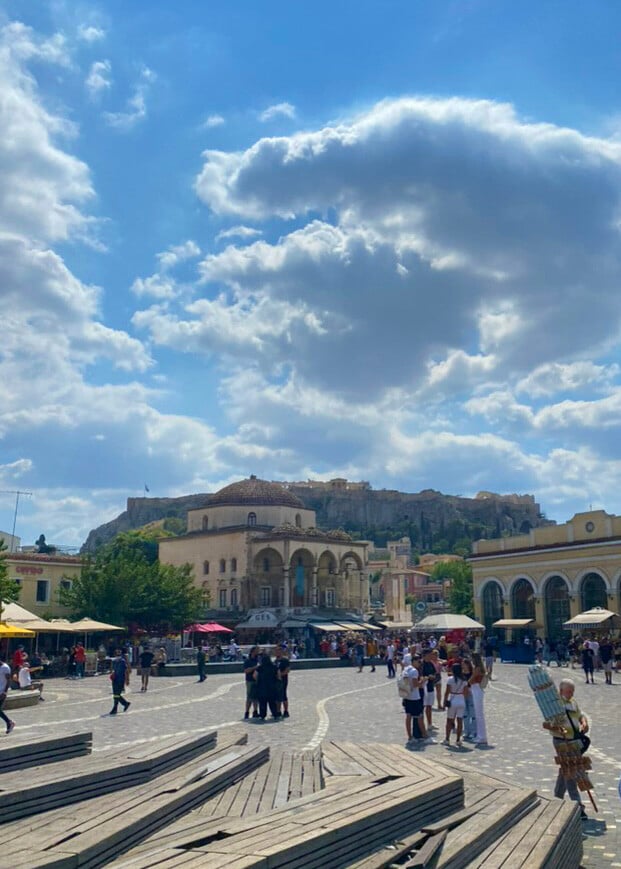
Plaka
Plaka, often called the "Neighborhood of the Gods," is Athens' oldest and most picturesque district, nestled just below the Acropolis. This charming area is characterized by its narrow, winding streets, neoclassical buildings, and an abundance of cafes, tavernas, and shops selling traditional Greek crafts and souvenirs. Key sites in Plaka include the Lysicrates Monument, the Jewish Museum of Greece, and several smaller Byzantine churches.
Staying in Plaka is ideal for tourists who want to immerse themselves in the historic and cultural heart of Athens. Its central location provides easy access to major attractions like the Acropolis, the Acropolis Museum, and Syntagma Square.
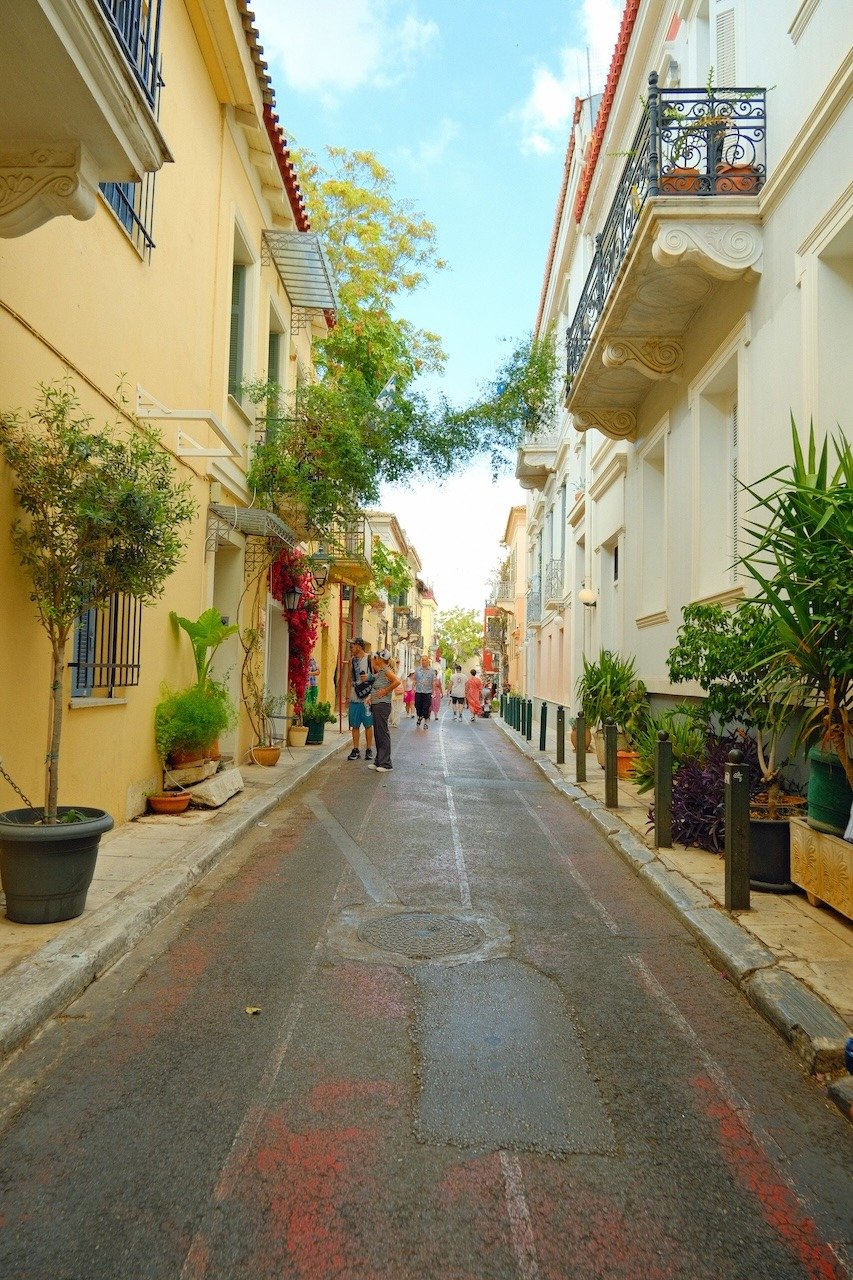
Syntagma
Syntagma is the political center of Athens, home to the Greek Parliament and the iconic Syntagma Square. Located just a short walk from Plaka and Monastiraki, Syntagma is one of the city’s most important neighborhoods. Visitors can witness the changing of the guard at the Tomb of the Unknown Soldier, explore the National Garden, or take a stroll along Ermou Street, Athens' main shopping thoroughfare.
Syntagma is an excellent place to stay for tourists, especially those interested in being close to the city’s main transportation hub. With its central location and proximity to major sites, including the Acropolis, Syntagma is both convenient and culturally rich.

Piraeus
Piraeus, though technically a separate city, is often considered a neighborhood of Athens due to its proximity and close ties to the capital. Located about 10 kilometers southwest of central Athens, Piraeus is Greece's largest port and the gateway to the Greek islands. Most ferries to the nearby Greek islands and cruise ships leave from Piraeus. Key attractions in Piraeus include the Archaeological Museum of Piraeus, the Hellenic Maritime Museum, and the picturesque Zea Marina.
While Piraeus is more of a transit hub, it can be a good place to stay for tourists who are planning island-hopping trips or want to experience a different side of Athens away from the more tourist-heavy areas. The neighborhood offers a mix of mid-range hotels and seafood restaurants along the waterfront.
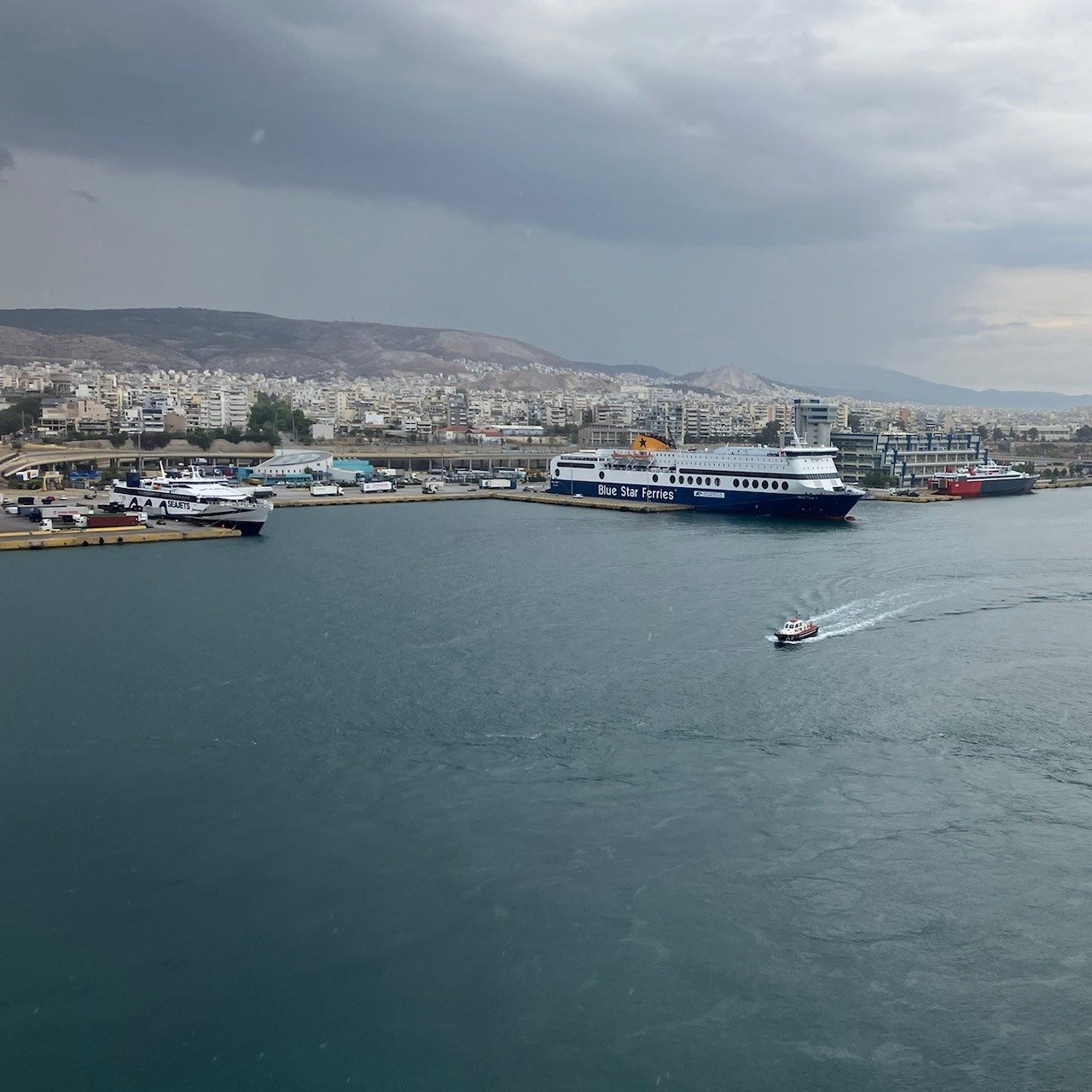
Exarchia
Exarchia is known for its alternative vibe and rich history of political activism, making it one of Athens' most unique neighborhoods. Located just north of Kolonaki and home to the National Archaeological Museum, Exarchia is filled with street art, independent bookshops, cafes, and live music venues. The neighborhood’s countercultural atmosphere attracts a young and creative crowd, and it is a great place to experience Athens’ underground scene.
While Exarchia may not be the first choice for every tourist due to its edgy reputation, it offers an authentic and vibrant experience for those interested in exploring a different side of the city. Accommodation options are more budget-friendly, making it a good choice for younger travelers.
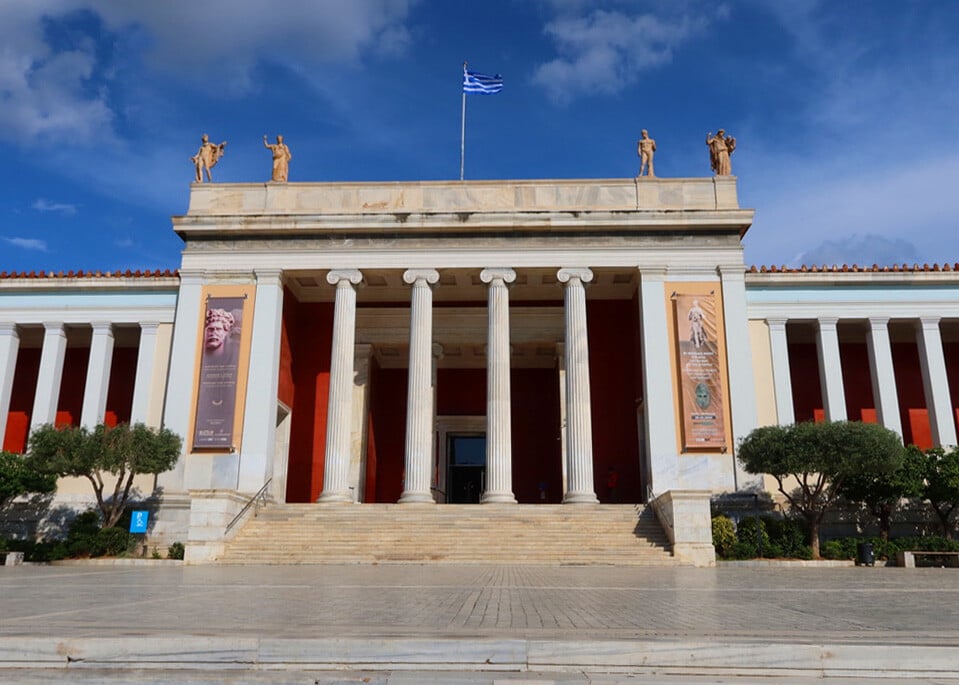
Kolonaki
Kolonaki is one of Athens' most upscale and fashionable neighborhoods, located at the base of Mount Lycabettus, just northeast of Syntagma. Known for its chic boutiques, high-end restaurants, and art galleries, Kolonaki is a favorite among locals and visitors alike. The neighborhood is home to several cultural institutions, including the Benaki Museum, the Museum of Cycladic Art, and the Goulandris Museum of Modern Art.
Staying in Kolonaki offers a luxurious and convenient experience, with a range of boutique hotels and easy access to both the city center and the peaceful slopes of Mount Lycabettus. It is an excellent base for tourists looking for a more refined stay in Athens.
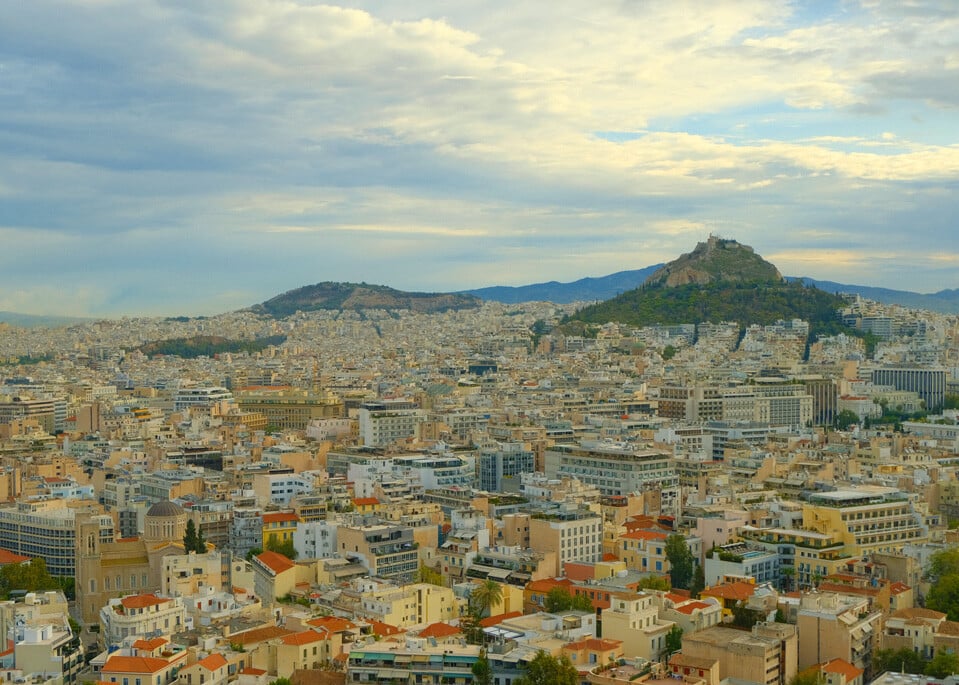
Thissio (Thiseio)
Thissio (or Thiseio) is a charming neighborhood located just southwest of Monastiraki, offering some of the best views of the Acropolis, especially at sunset. The neighborhood is known for its pedestrianized streets, such as Apostolou Pavlou, which are lined with cafes and restaurants that provide the perfect setting for a leisurely meal with a view. Thissio is also home to several important archaeological sites, including the Ancient Agora and the Temple of Hephaestus, which is one of the best-preserved ancient temples in Athens.
With its relaxed atmosphere and close proximity to the Acropolis and the Ancient Agora, Thissio is an excellent place to stay for tourists who want to enjoy the historic charm of Athens.
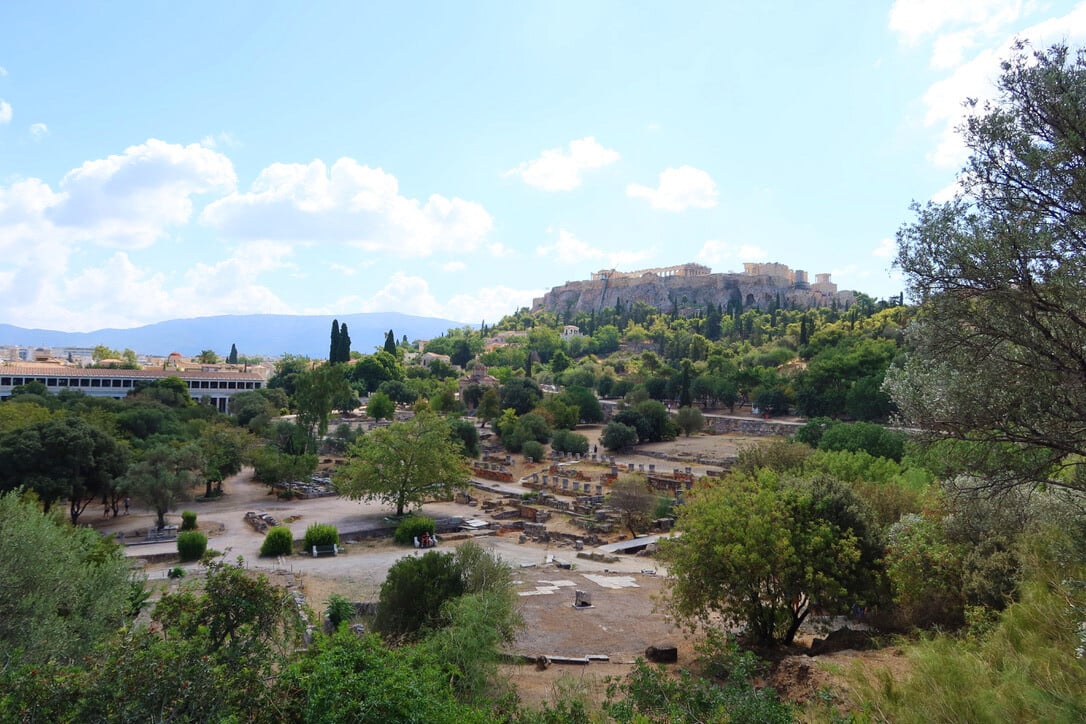
Makriyanni
Makriyanni is a peaceful yet central neighborhood located just south of the Acropolis. It is home to the Acropolis Museum, one of Athens' top cultural attractions, as well as several other important sites, including the Theatre of Dionysus and the Odeon of Herodes Atticus.
Makriyanni’s tree-lined streets and neoclassical buildings create a serene atmosphere, making it a great place to stay for those looking for a quieter experience while still being close to major attractions. The neighborhood offers a range of accommodation options, from luxury hotels to cozy guesthouses, and its central location provides easy access to Plaka, Koukaki, and Syntagma.
Koukaki
Koukaki is a trendy neighborhood located just southwest of the Acropolis and bordering Makriyanni. Known for its laid-back vibe, Koukaki is filled with cozy cafes, local eateries, and artisan shops, offering a more authentic Athenian experience. The neighborhood is also home to several important sites, including the Philopappos Hill, which offers panoramic views of Athens and the Acropolis.
Koukaki is a great place to stay for tourists who want to be close to major attractions but prefer a quieter, more residential area. With a mix of budget-friendly accommodations and stylish boutique hotels, Koukaki is an increasingly popular choice among visitors to Athens.

Pangrati
Pangrati is a lively and rapidly evolving neighborhood in Athens, located just southeast of the city center and within walking distance of Syntagma Square. Known for its blend of old-world charm and modern vibrancy, Pangrati has become a favorite among locals and visitors alike, offering a mix of traditional Athenian culture and contemporary urban life. The neighborhood is characterized by its tree-lined streets, cozy cafes, and eclectic mix of shops, making it a perfect spot for leisurely strolls and people-watching.
Pangrati is home to several important cultural landmarks, including the Panathenaic Stadium, also known as Kallimarmaro, which hosted the first modern Olympic Games in 1896. Art lovers will appreciate the Basil & Elise Goulandris Foundation, a museum that houses an impressive collection of modern and contemporary art. The National Gallery - Alexandros Soutsos Museum, located nearby, is another highlight, showcasing a rich collection of Greek and European art.
This neighborhood's proximity to central Athens, combined with its vibrant atmosphere and cultural offerings, makes Pangrati an attractive place to stay for tourists. Its array of dining options, from traditional tavernas to trendy eateries, ensures that visitors can enjoy authentic Greek cuisine as well as modern culinary experiences. Whether you're exploring its hidden corners or relaxing in one of its charming squares, Pangrati offers a delightful mix of history, culture, and contemporary life.
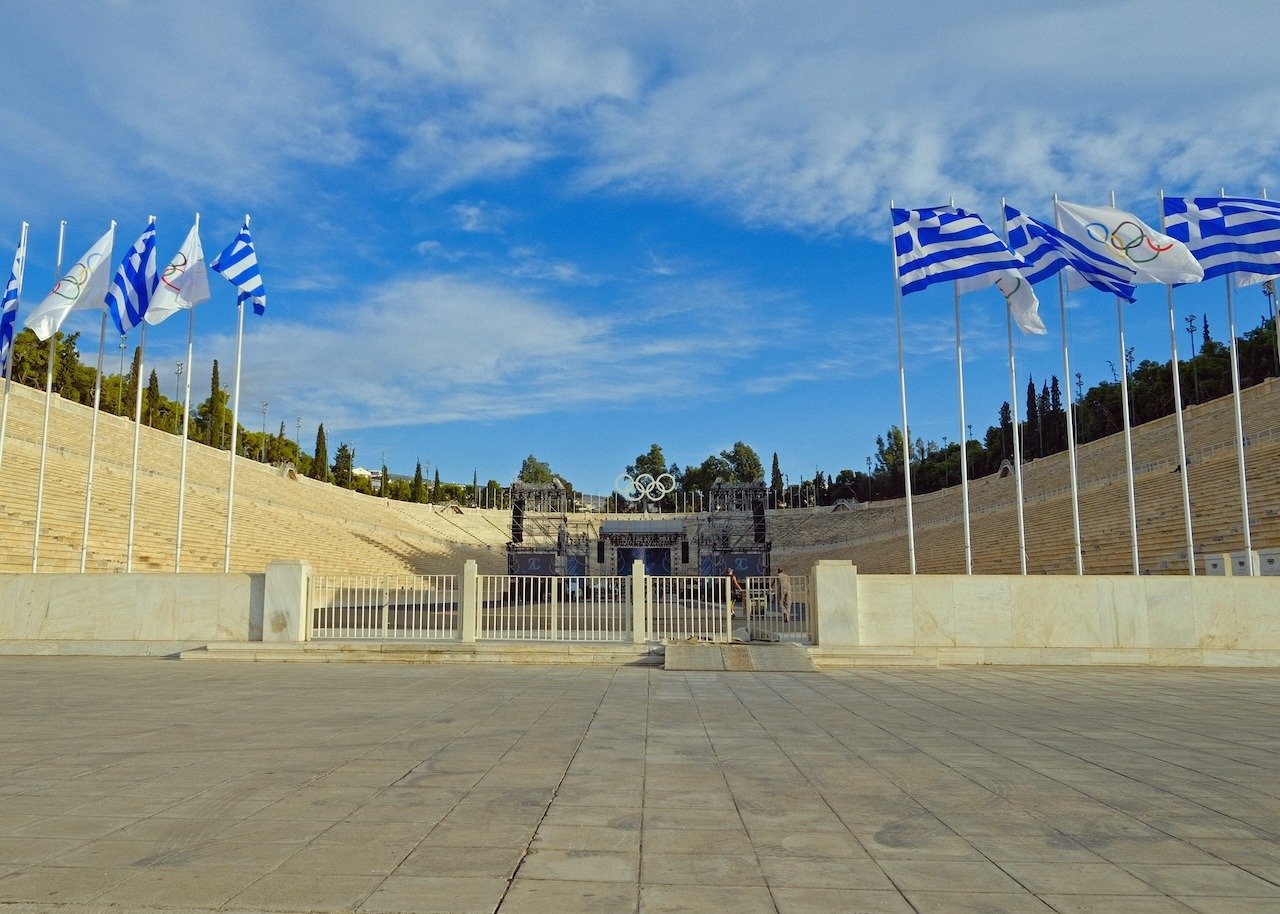
Our Take on Athens
Over the years, we have stayed in a couple of different hotels in Athens, always in the Monastiraki neighborhood. We love Monastiraki thanks to its central location within Athens. Monastiraki can be conveniently reached from both the Piraeus Port and Athens International Airport via the Metro. With excellent restaurants serving authentic Greek dishes like moussaka and entertaining upscale cocktail bars like The Clumsies, Monastiraki stands out as our favorite neighborhood in this amazing city.
You do not need a lot of time to see all the main attractions and the top Athens museums; two to three days are sufficient, making it an ideal city to combine with other destinations as part of a longer trip. Whether you head-off on a ferry for the dreamy Greek Islands, or venture on to Meteora and Thessaloniki, Athens is a great starting point. Conveniently, everyone we engaged with spoke English too, which made it easy to really enjoy our time in Greece's capital city.
As far as hotels go, we absolutely adore the Hellenic Vibes Smart Hotel in Athens. It is centrally located, just steps from Monastiraki Square, with large rooms, and wonderful staff. The included breakfast is also top-notch! The hotel is walking distance to the Acropolis, the Ancient Agora, and more. Here are some of the hotels we have stayed at, or friends and family have stayed at, that we can also highly recommend in Athens:

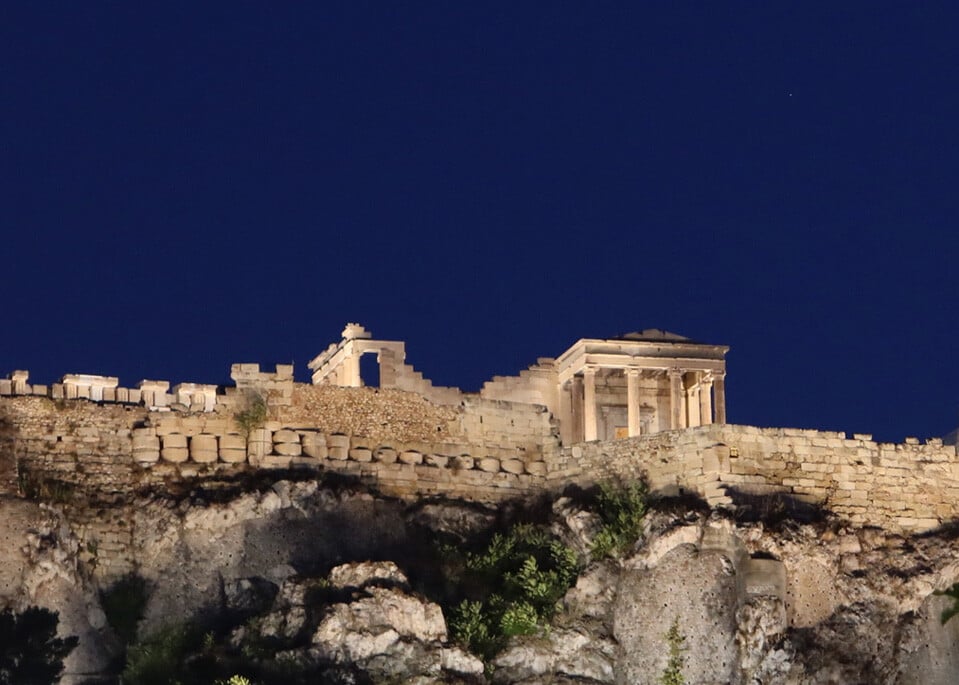
Looking for more Madrid content?
Check out the Jetset Seeker Blog!
Looking for more Vienna content?
Check out the Jetset Seeker Blog!
Nearby Destinations
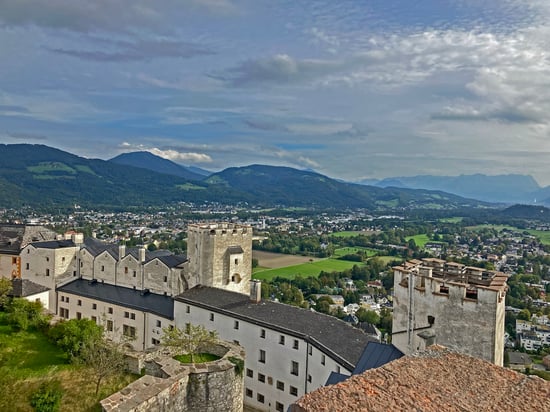
Salzburg, Austria

Munich, Germany
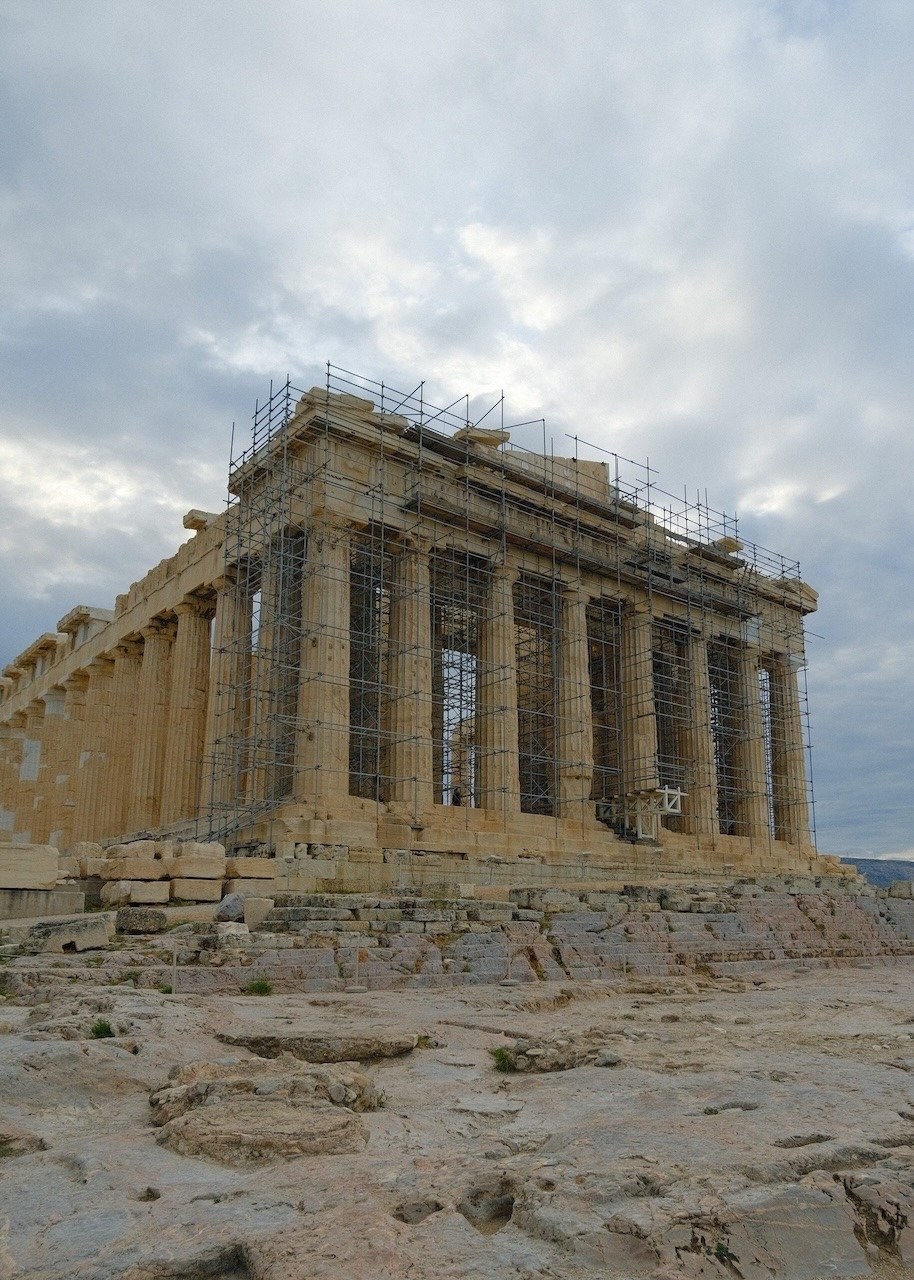
A Deep Dive: Visiting The Acropolis
Visiting the Acropolis without first understanding the significance and history of this world-famous landmark would be a visit in vain. Before visiting the Acropolis, here are some key things to know to help you make the most of your time in Athens.
Historical Significance
The Acropolis of Athens is one of the most iconic and historically significant sites in the world, symbolizing the cultural and intellectual achievements of ancient Greece. Perched on a rocky hill overlooking the city, the Acropolis is a complex of ancient buildings and temples, the most famous of which is the Parthenon. These structures, built primarily in the 5th century BC during the Golden Age of Athens under the leadership of Pericles, are considered masterpieces of classical Greek architecture and have had a profound influence on Western art and culture.
The area of the Acropolis has been inhabited since prehistoric times, but it was during the 5th century BC that it was transformed into the monumental complex we see today. This period, known as the Age of Pericles, was marked by the city's rise as a powerful and culturally vibrant city-state. The Acropolis was conceived as a sacred precinct dedicated to the goddess Athena, the patron deity of Athens, and was intended to demonstrate the city’s wealth, power, and artistic achievement.
The Acropolis served not only as a religious center but also as a symbol of Athenian democracy and civic pride. The buildings on the Acropolis were designed by some of the most renowned architects and sculptors of the time. The site includes several key structures, such as the Parthenon, the Erechtheion with the iconic Porch of the Caryatids, the Temple of Athena Nike, the Monument of Agrippa, and the Propylaea, each with its own unique architectural and historical significance.
The Parthenon
The Parthenon is the centerpiece of the Acropolis and one of the most recognized buildings in the world. Dedicated to Athena, the goddess of wisdom and war, the Parthenon was constructed between 447 and 432 BC. The Parthenon is an exemplary model of Doric architecture, characterized by its simple, yet majestic design. The temple originally housed a massive chryselephantine (gold and ivory) statue of Athena, which stood nearly 40 feet (12 meters) tall. The exterior of the Parthenon was decorated with elaborate sculptural friezes and metopes depicting various mythological scenes, such as the Battle of the Lapiths and Centaurs, as well as the Panathenaic procession, a religious festival held in honor of Athena.
The architectural brilliance of the Parthenon lies in its subtle refinements. The columns, for example, are not perfectly straight but slightly curved, a design feature known as entasis, which corrects optical illusions and gives the temple a more harmonious appearance. The Parthenon’s sculptural decorations are also masterpieces of Greek art, demonstrating a high level of skill and artistry that was unparalleled at the time.
Purpose & Use
The Acropolis and the Parthenon, in particular, held immense religious significance for the ancient Athenians. The Parthenon served as a temple where Athenians worshiped Athena, who was believed to have granted the city prosperity and protection. The annual Panathenaic Festival, one of the most important religious festivals in Athens, culminated in a grand procession that ended at the Parthenon. Beyond its religious role, the Parthenon was also a symbol of Athenian democracy and the city’s cultural dominance in the ancient world. The construction of the Parthenon was funded by the Delian League, an alliance of Greek city-states led by Athens, and its grandeur reflected the city’s leadership in the Greek world.
The Acropolis and the Parthenon have endured through the centuries, surviving invasions, natural disasters, and changes in religious practices. During the Byzantine period, the Parthenon was converted into a Christian church in the 6th century, and later, during the Ottoman period, it was used as a mosque. Eventually, the Parthenon was used as an ammunition depot by the Ottomans. It remained largely intact until the late 17th century AD, when it was damaged during the Siege of the Acropolis in 1687 by Venetian forces. An explosion caused by a cannonball ignited the Ottoman ammunition store, destroying much of the building’s interior and roof. After which point, the Acropolis and Parthenon were left in ruin.
In the 19th century, fascination with the Acropolis grew across Europe, after Thomas Bruce, the 7th Earl of Elgin, shipped pieces of the Acropolis back to England. This collection, known as the Elgin Marbles, makes up a large portion of the British Museum's controversial collection. Despite the damage to the Acropolis over the centuries, the Parthenon has remained a symbol of ancient Greek civilization. After Greece gained independence from the Ottoman Empire in 1832, efforts were made to restore and preserve the Acropolis. These efforts continue today, with ongoing conservation and restoration projects aimed at protecting this invaluable heritage site for future generations. If you visit the Acropolis, remember that it is an active archeological site, and it has been operating as once since 1833!
The Acropolis Today
Today, the Acropolis and the Parthenon are UNESCO World Heritage Sites and attract millions of visitors each year. The site offers not only a breathtaking view of Athens but also a profound connection to the city’s ancient past. The Acropolis Museum, located nearby, houses many of the artifacts and sculptures that once adorned the Parthenon and other buildings on the Acropolis, providing visitors with deeper insights into the art, culture, and history of ancient Greece. To fully comprehend the glory and significance of the Acropolis, a visit to the Acropolis Museum is a must. Tickets can be purchased in-advance for the Acropolis Museum on the Acropolis Museum website, or in-person at the museum's ticket office.
Advance tickets, however, are required for admission to the Acropolis and can be purchased on the Hellenic Heritage E-Ticket website. Tickets are issued for specific time slots, so make sure you are on time or you may be denied admission. To avoid large crowds, choose the earliest admission time in the morning and be in line before the site opens. If you are not a morning person, you can also visit the Acropolis in the late afternoon. The busiest time to visit the Acropolis is midday, so aim to arrive around 4:30/5:00 PM as the crowds thin out and stay until the site closes. The Acropolis is open daily, but its opening hours vary based on the season. For additional information, please visit the Hellenic Heritage E-Ticket website.
Athens Travel Guide: Additional Resources for Visiting Greece's Capital
-

Visiting the Acropolis:
History, Highlights, &
How to Get Tickets
-
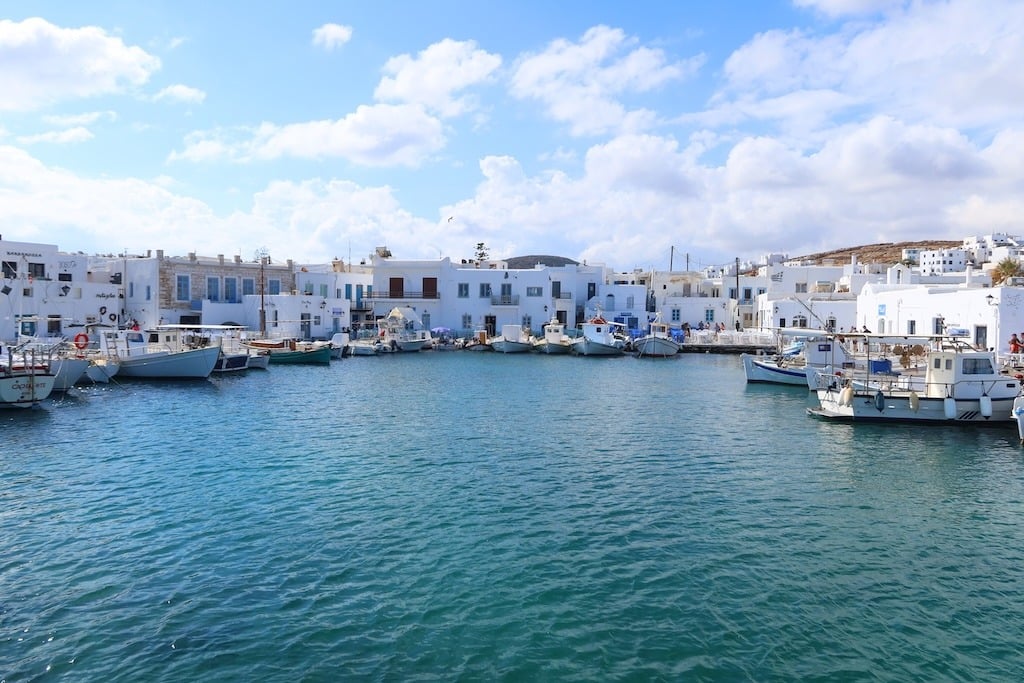
Guide to the Best Islands
Near Athens: Mykonos,
Paros, & Santorini
-

The Ultimate Guide to
the Best Honeymoon
Locations in Greece
-

From the Acropolis to
Antiquities: The Best
Museums in Athens
-
 One Day in Athens:What to See If You'reShort on Time
One Day in Athens:What to See If You'reShort on Time
Looking for more Athens content?
Check out the Jetset Seeker Blog!
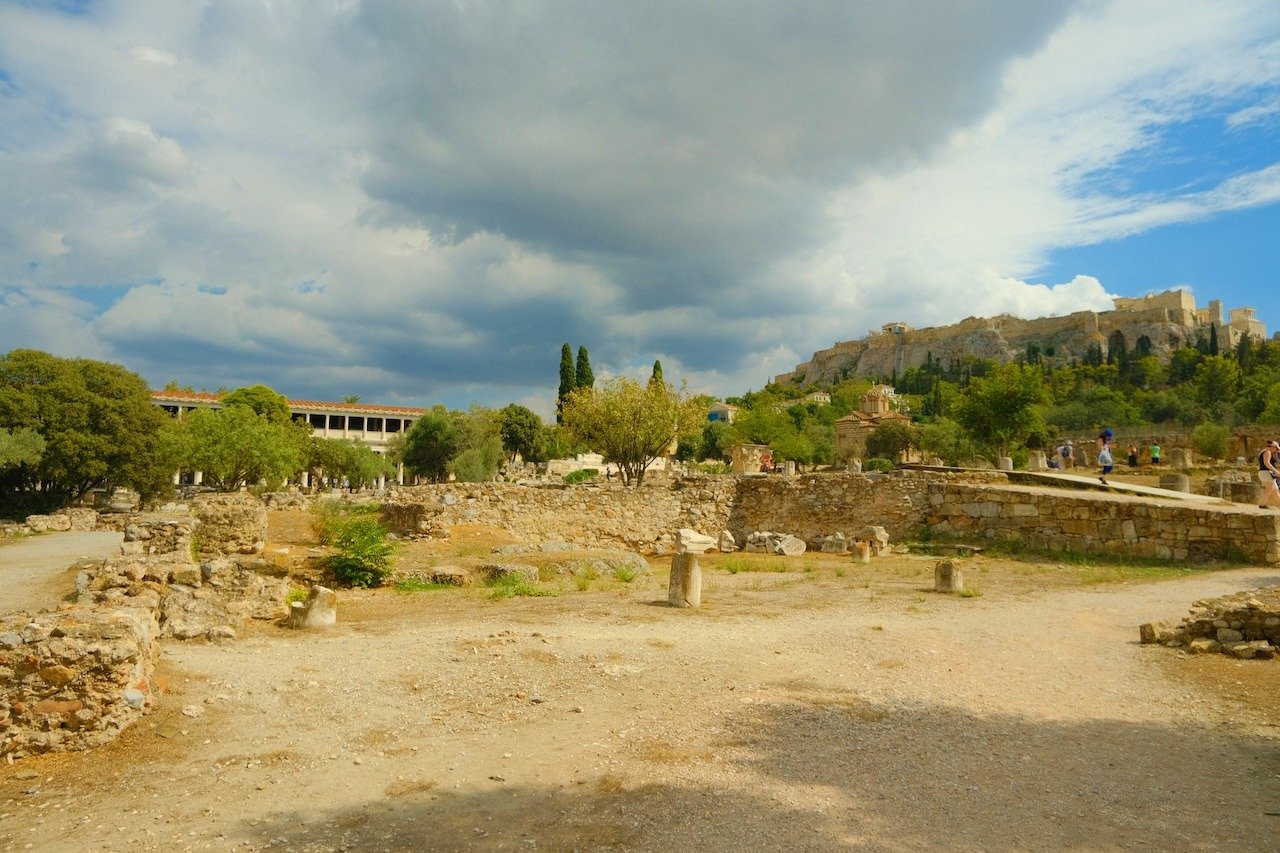
Our Athens Travel Guide & Trip Planning Resources
Curious about the resources that shaped our trip to Athens? Dive into the links below for additional insights and valuable information we used to plan our own trip.
What other honeymooners say


Laboris nisi ut aliquip ex ea commodo consequat. Duis aute irure dolor in reprehenderit in voluptate velit esse cillum dolore eu fugiat nulla pariatur. Excepteur sint occaecat cupidatat non proident, sunt in culpa qui officia deserunt mollit anim id est laborum.”


Laboris nisi ut aliquip ex ea commodo consequat. Duis aute irure dolor in reprehenderit in voluptate velit esse cillum dolore eu fugiat nulla pariatur. Excepteur sint occaecat cupidatat non proident, sunt in culpa qui officia deserunt mollit anim id est laborum.”

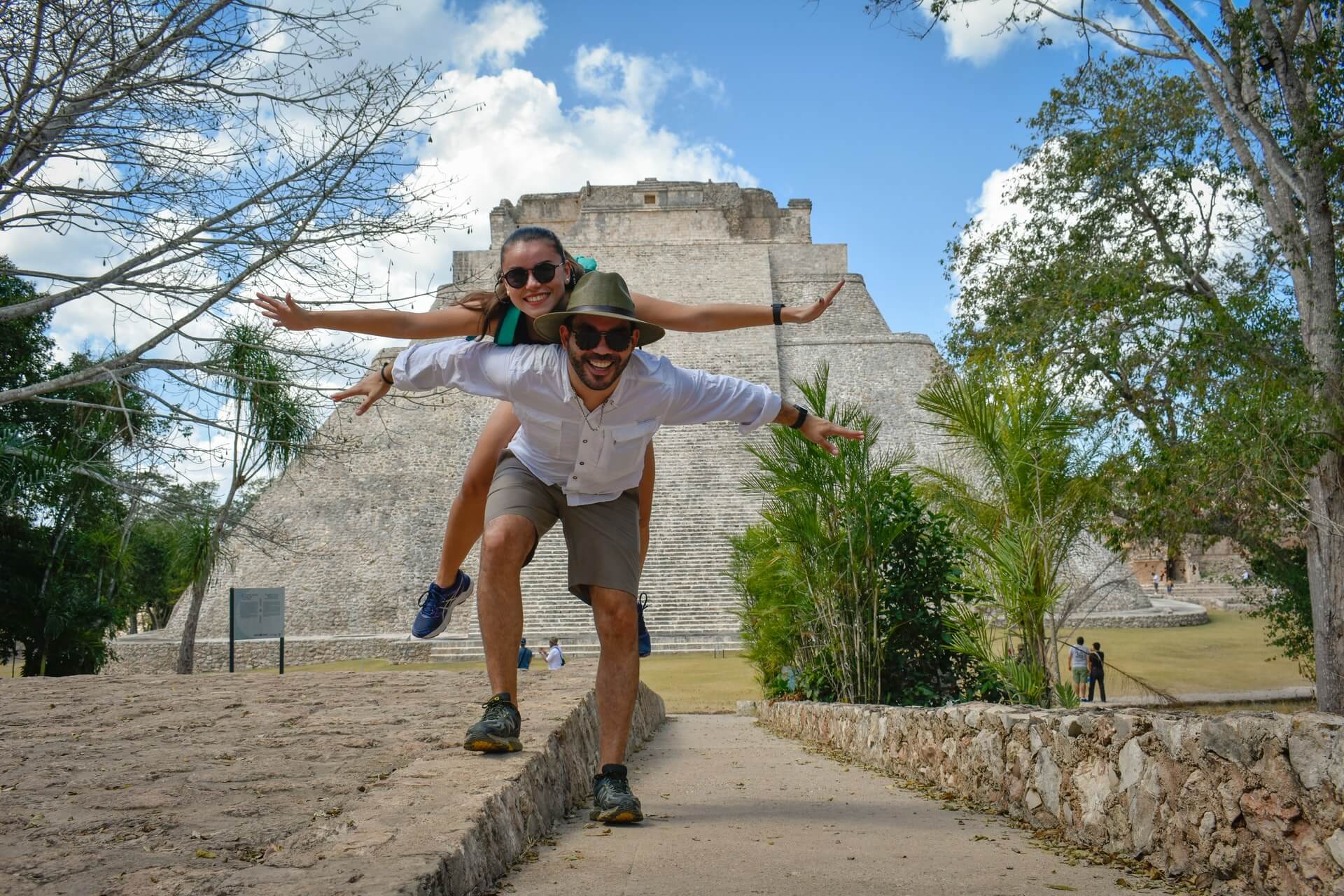
Laboris nisi ut aliquip ex ea commodo consequat. Duis aute irure dolor in reprehenderit in voluptate velit esse cillum dolore eu fugiat nulla pariatur. Excepteur sint occaecat cupidatat non proident, sunt in culpa qui officia deserunt mollit anim id est laborum.”
Tokyo Itineraries


%20(1).png?width=3690&height=2079&name=Jetset%20Seeker%20Logo%20(Banner)%20(1).png)

